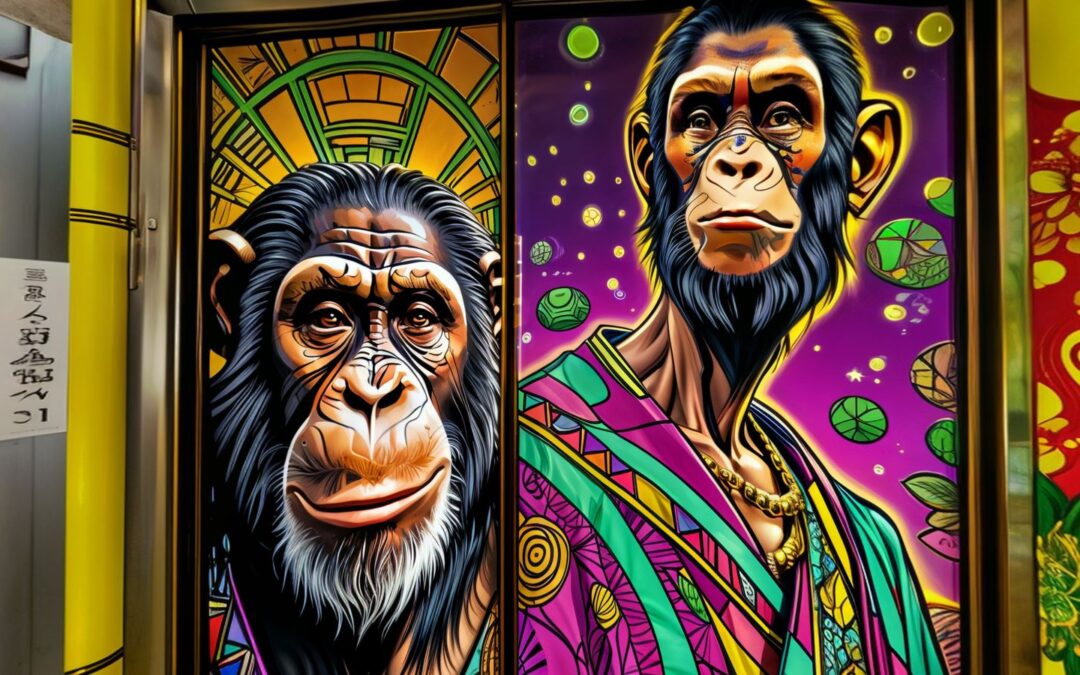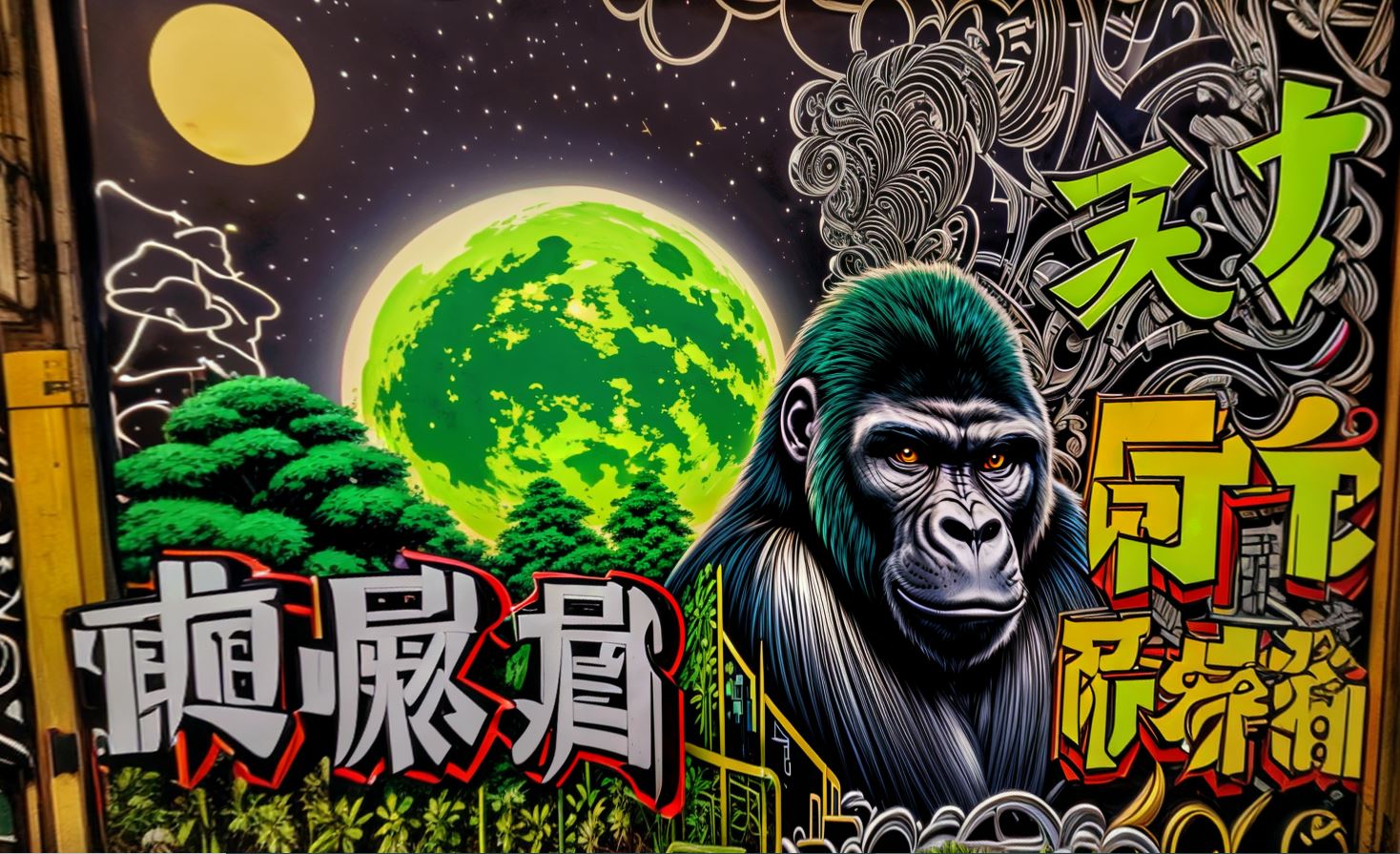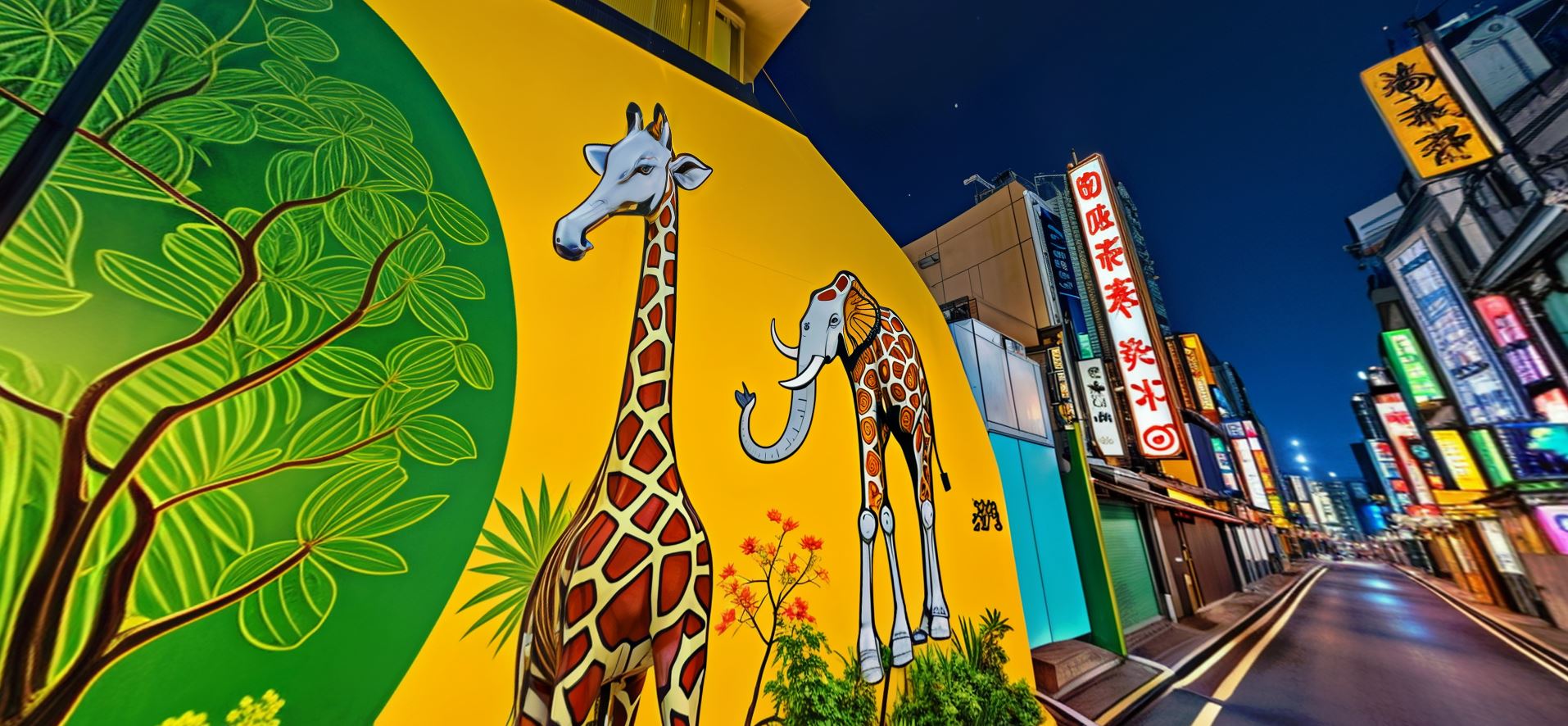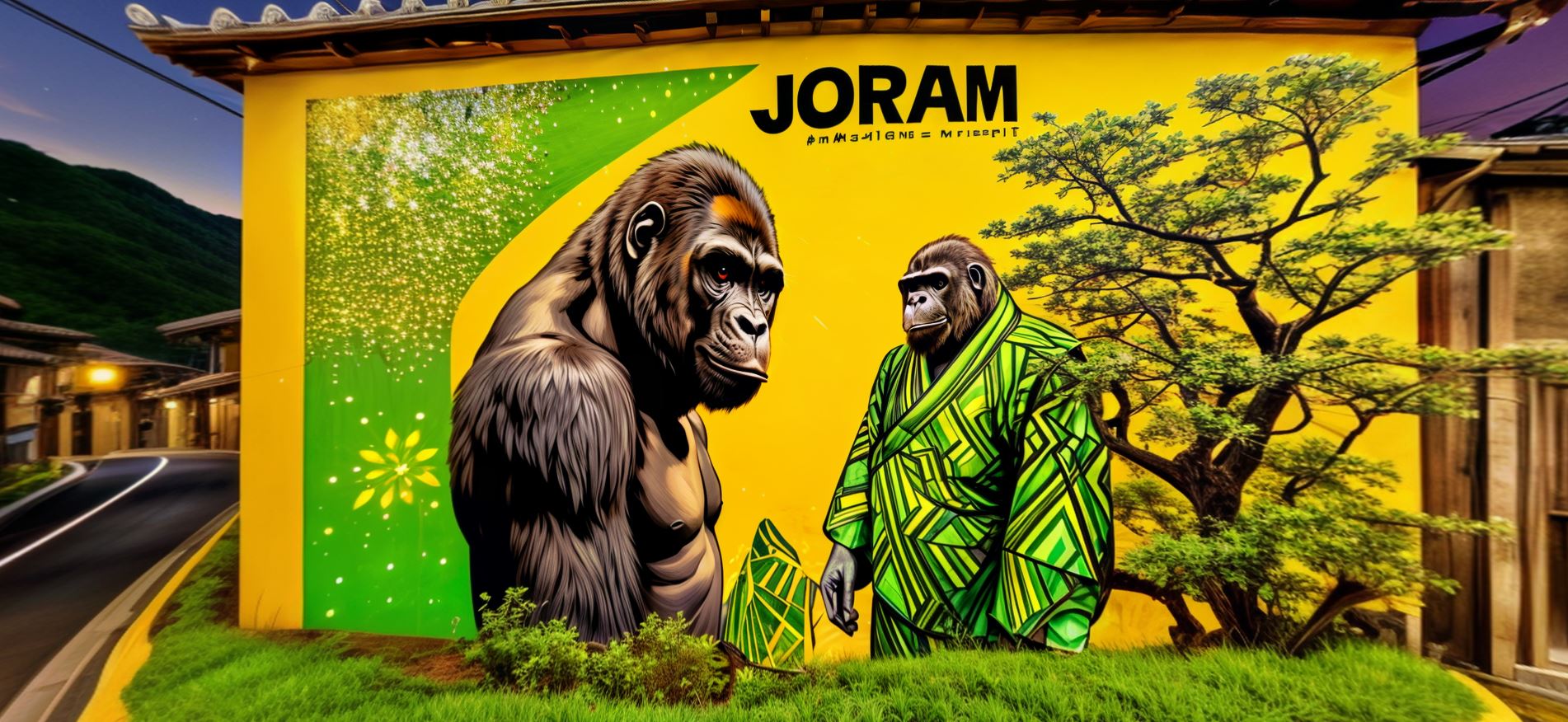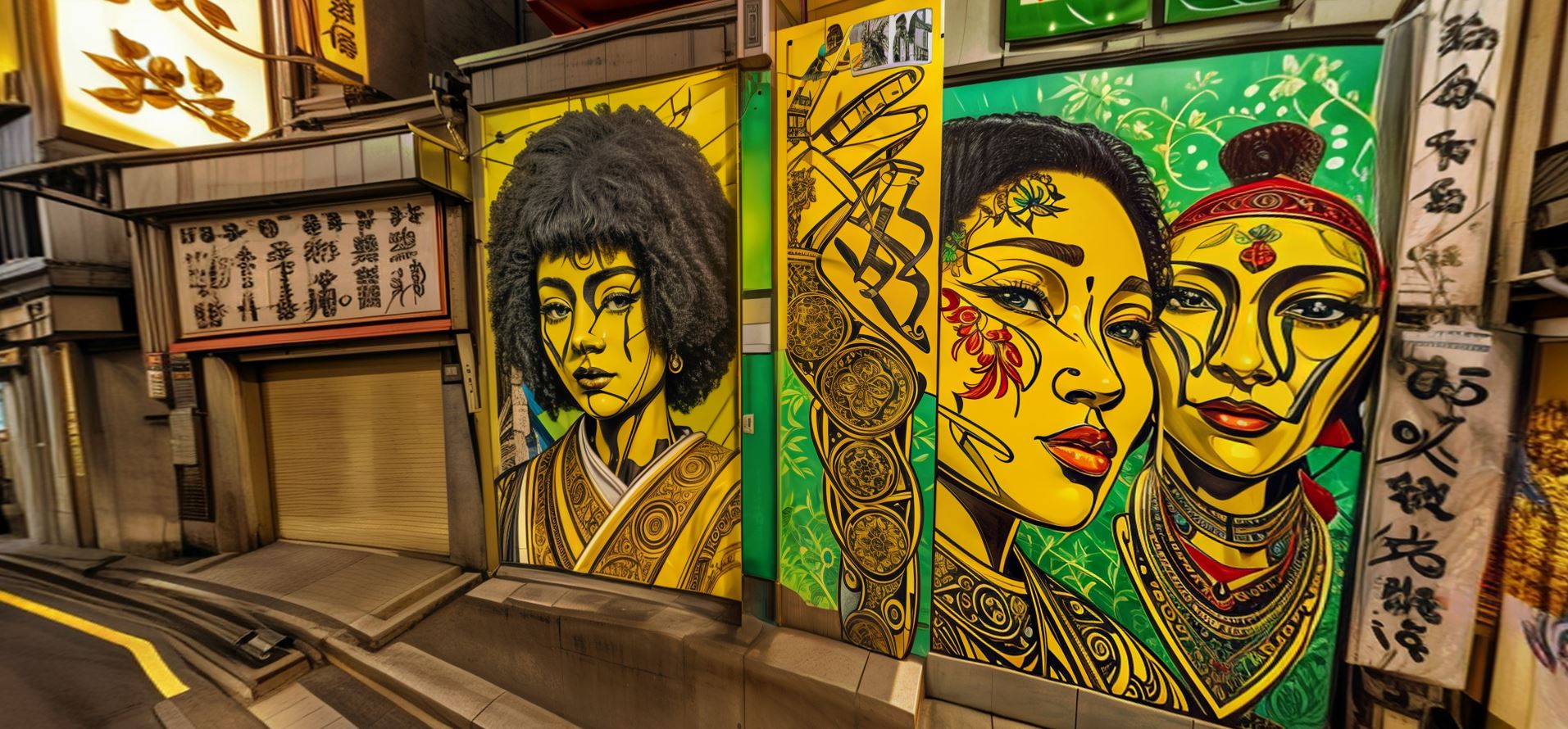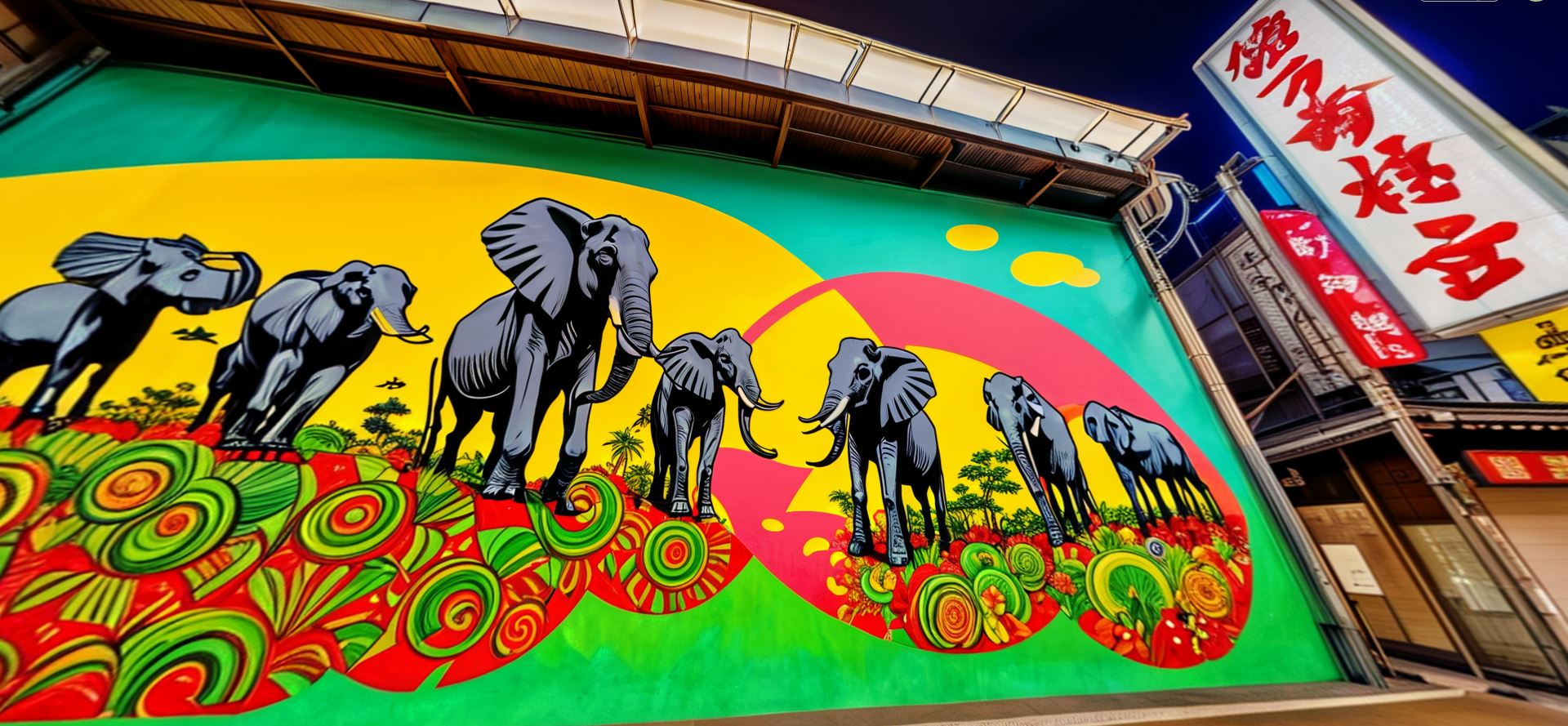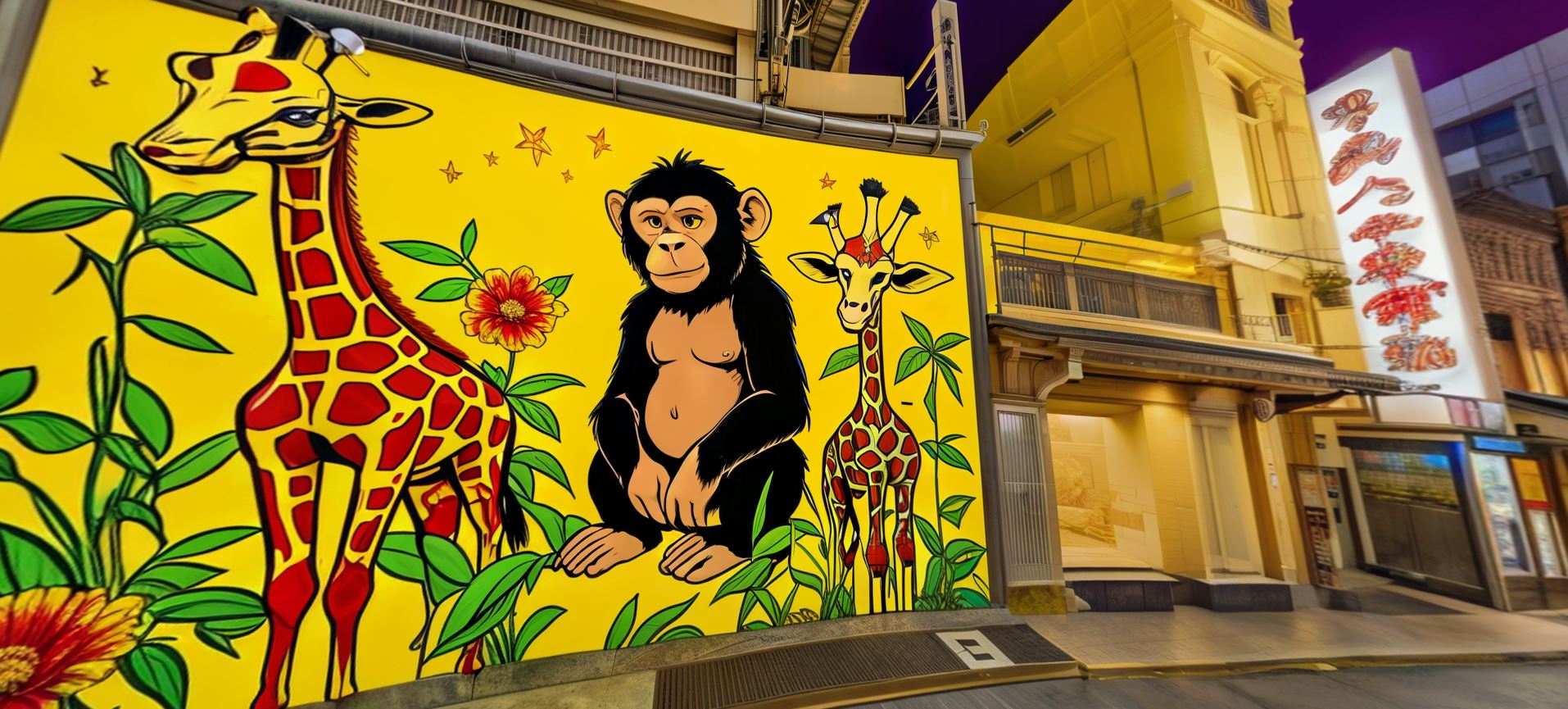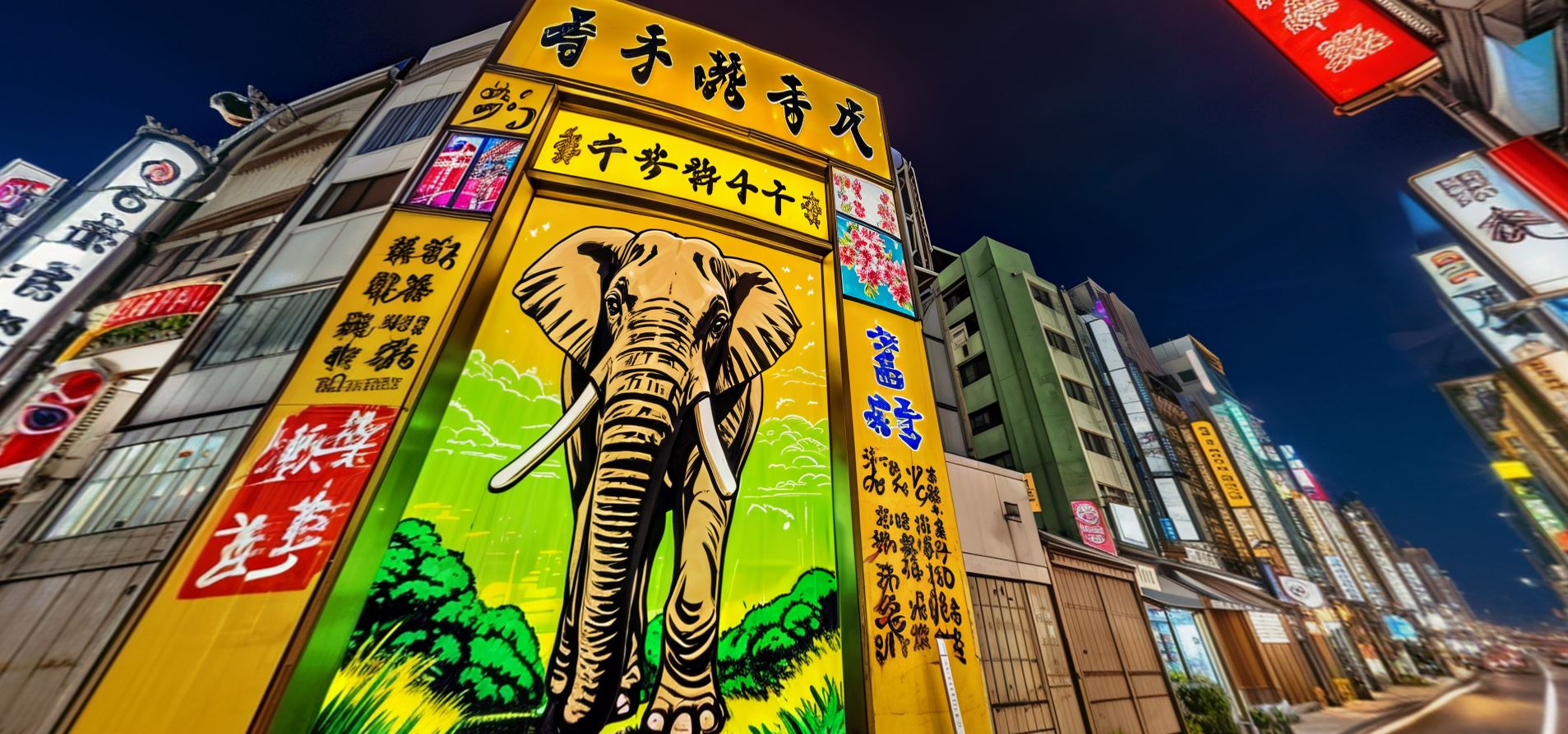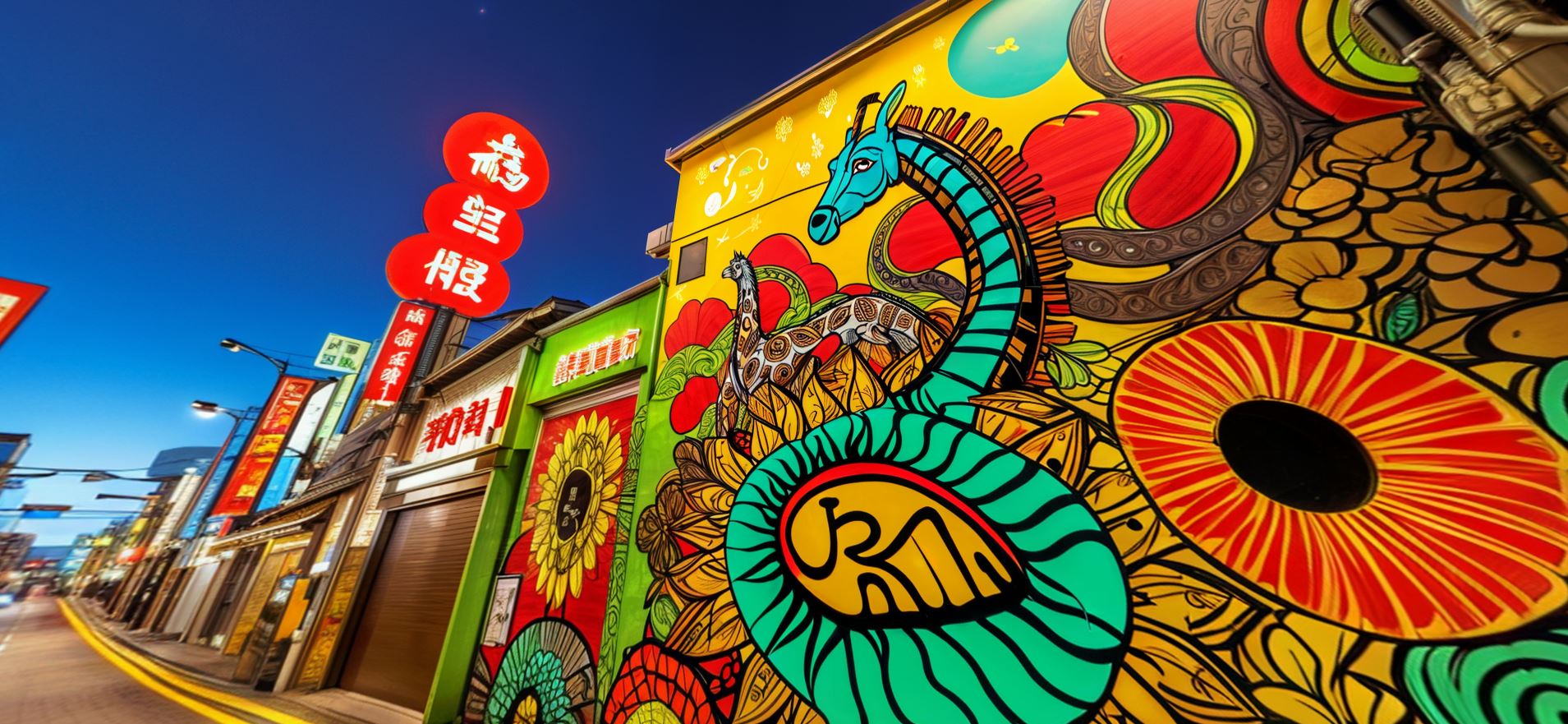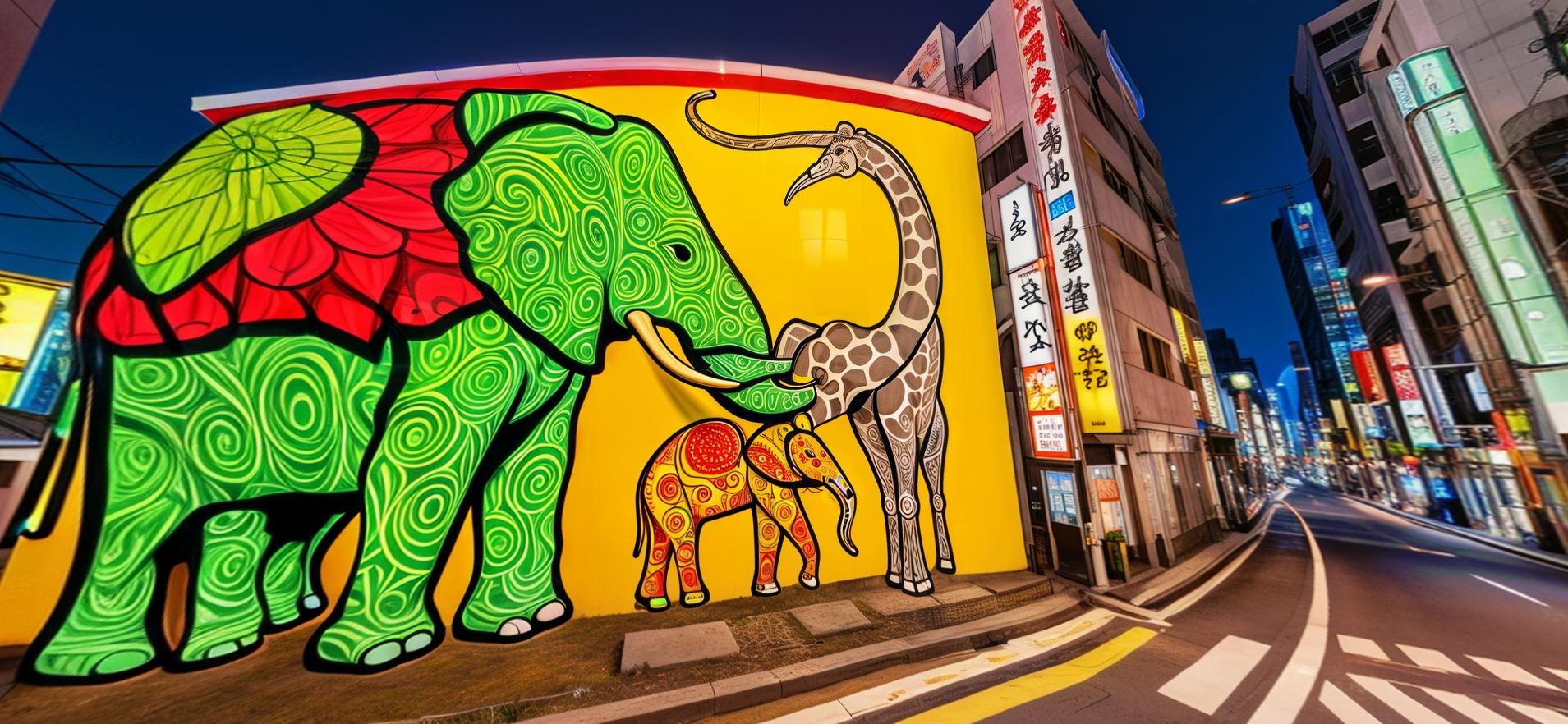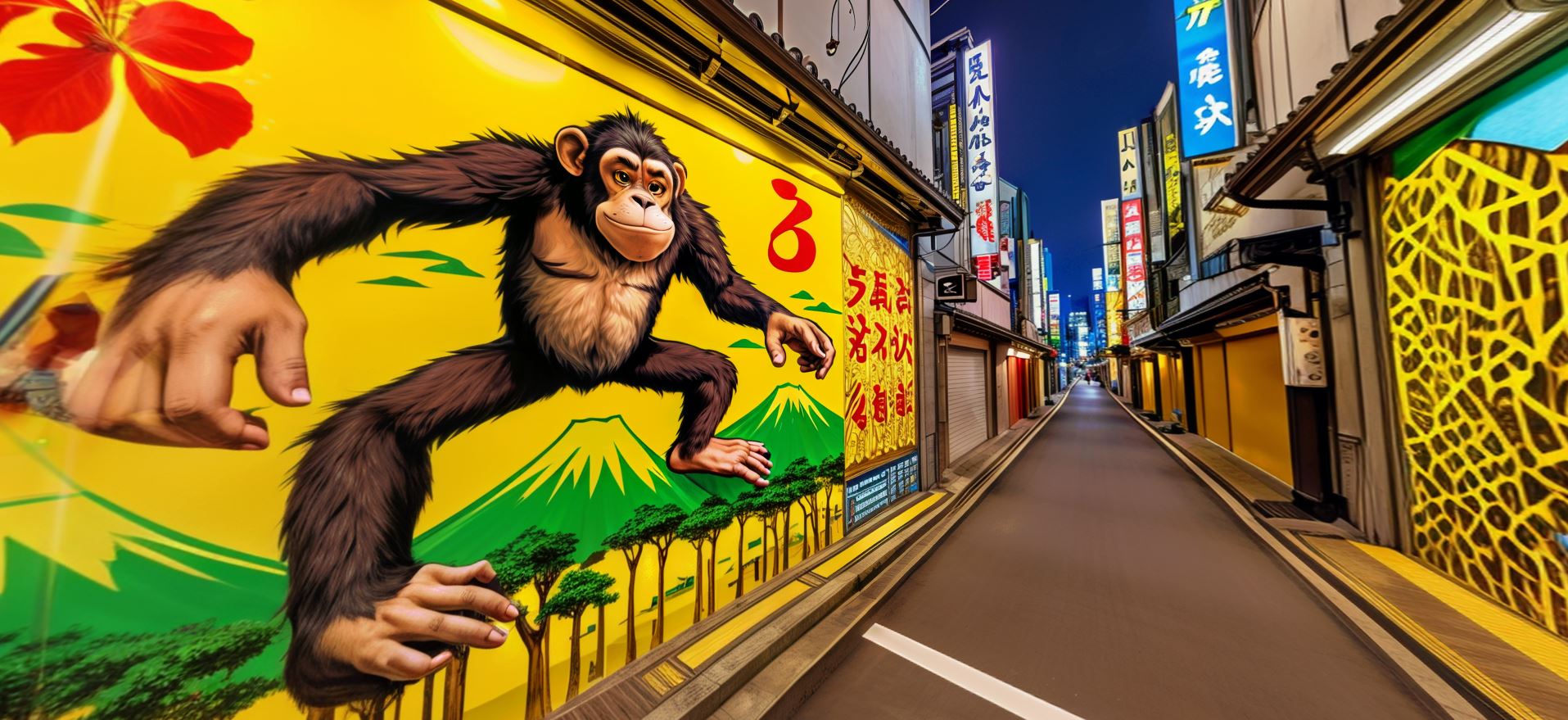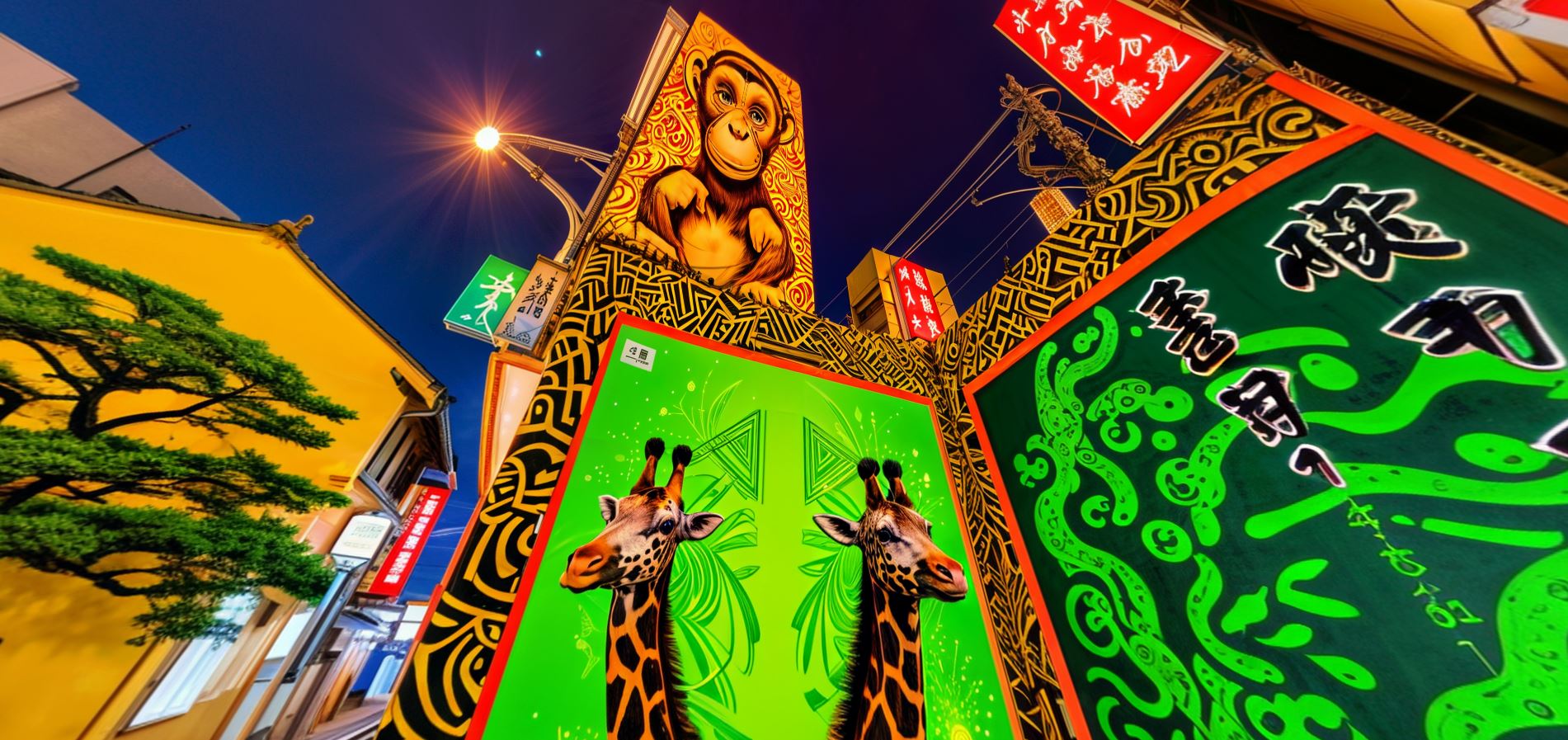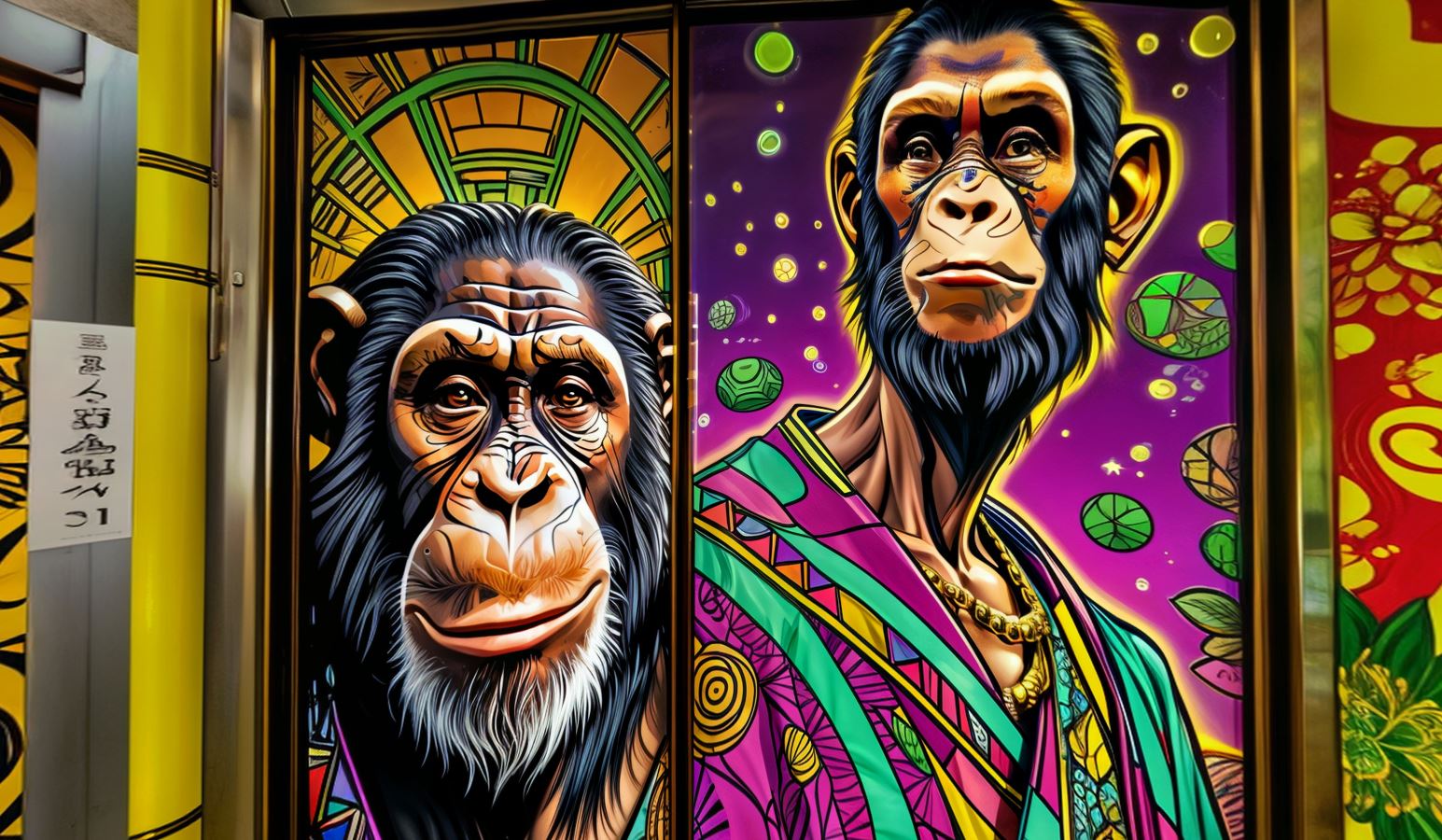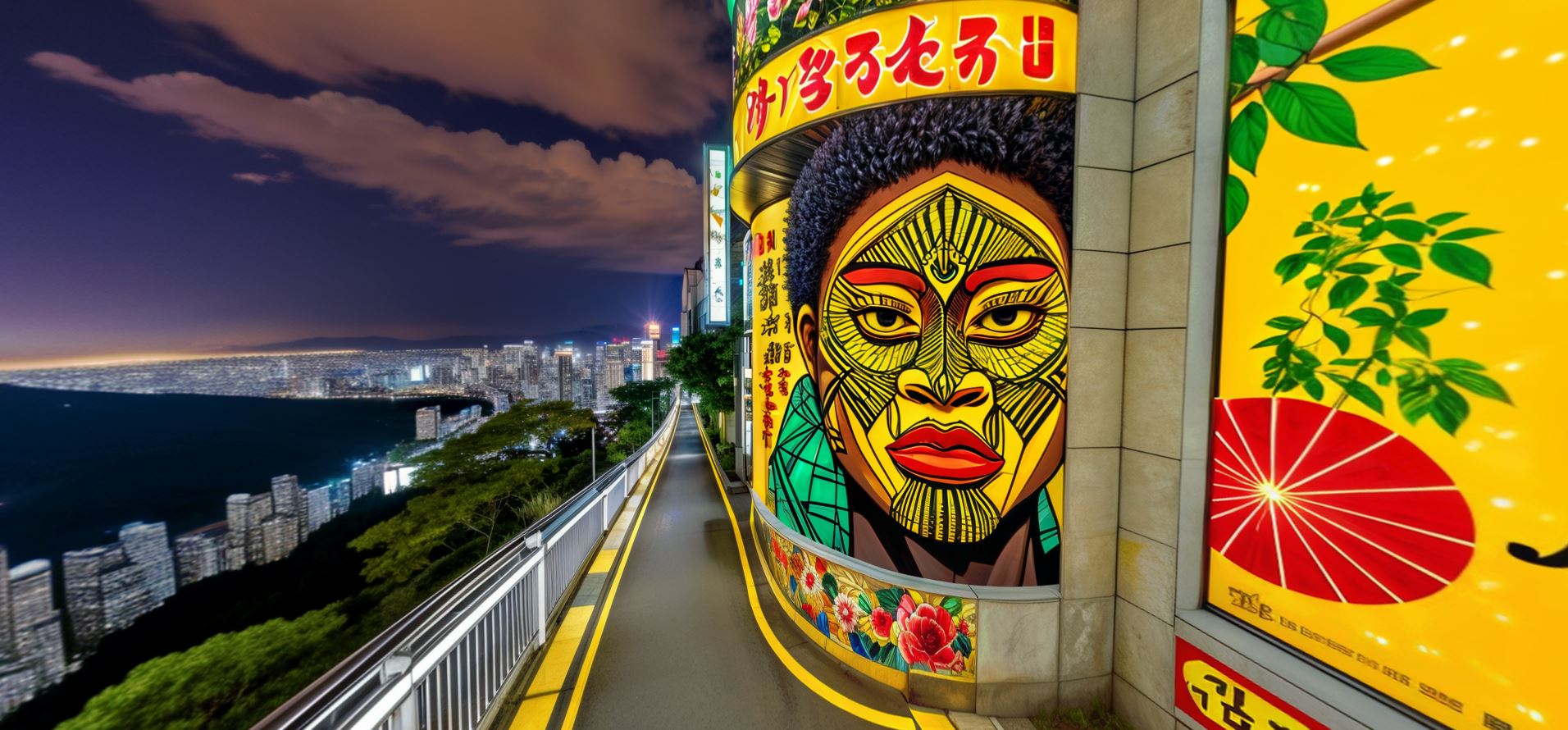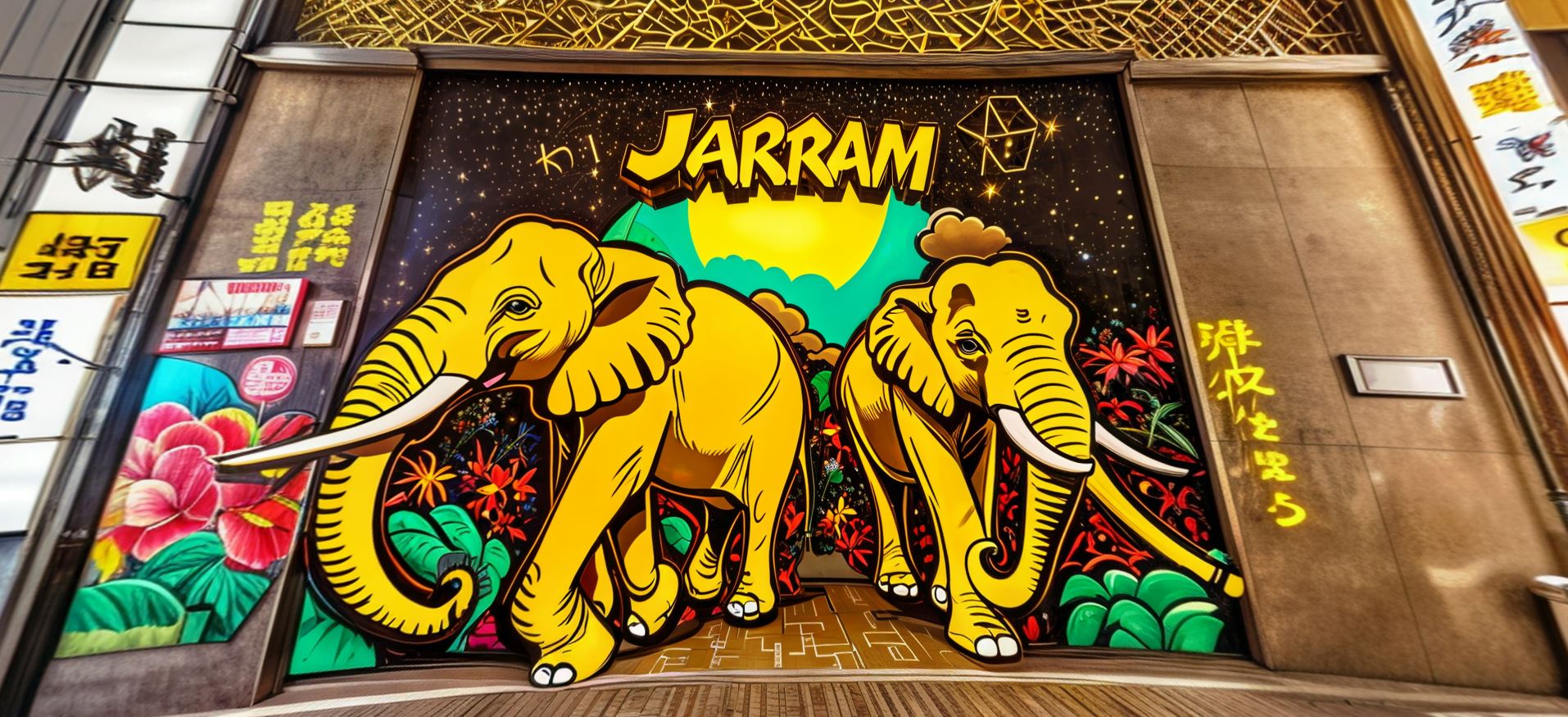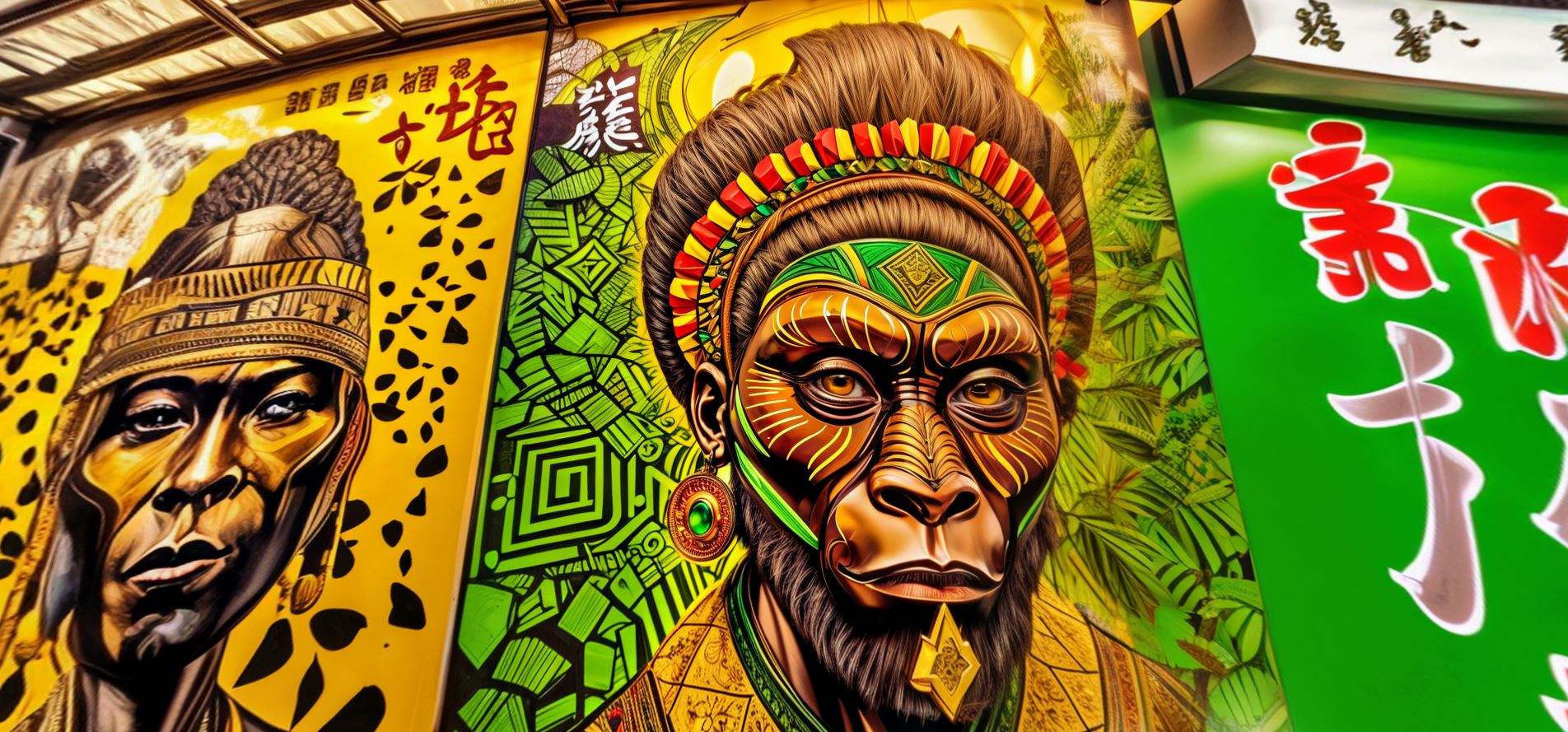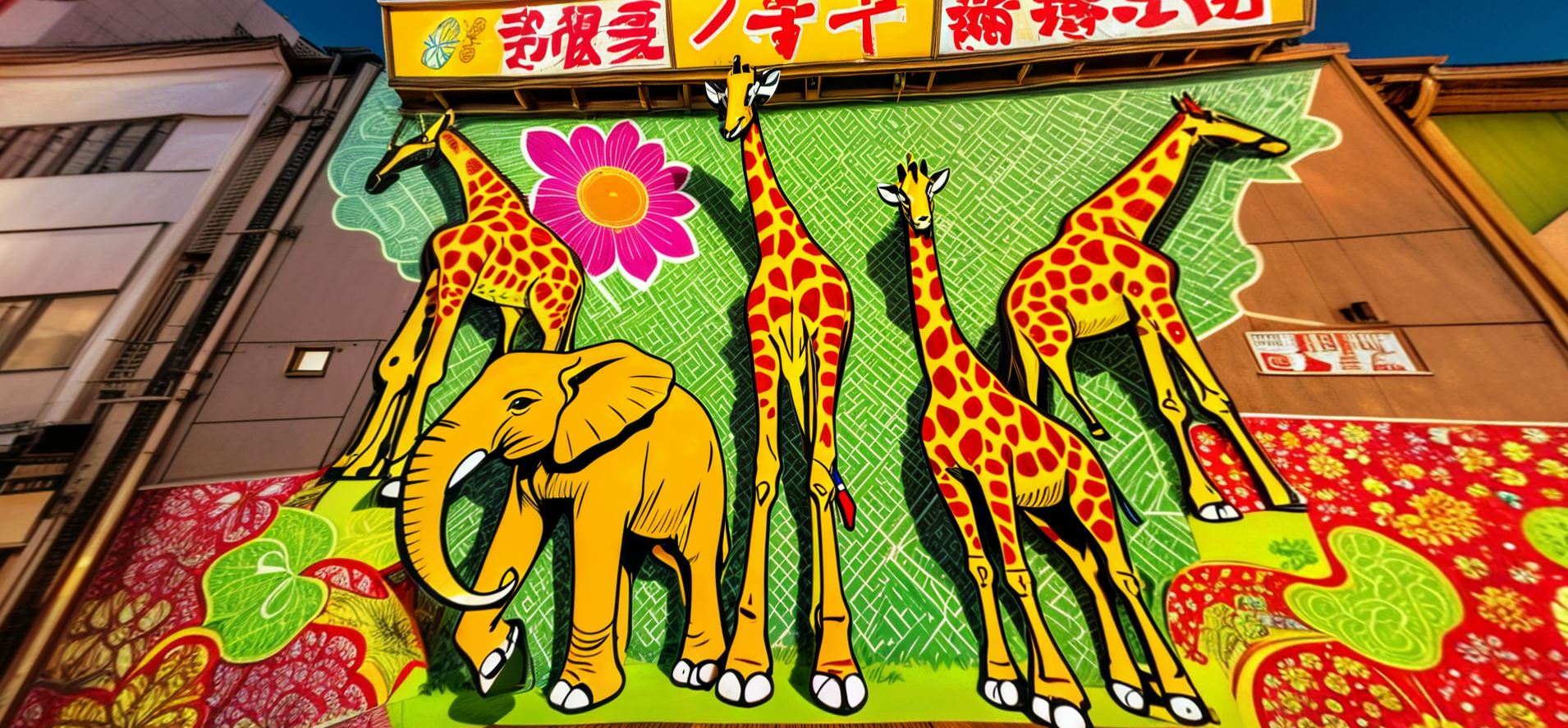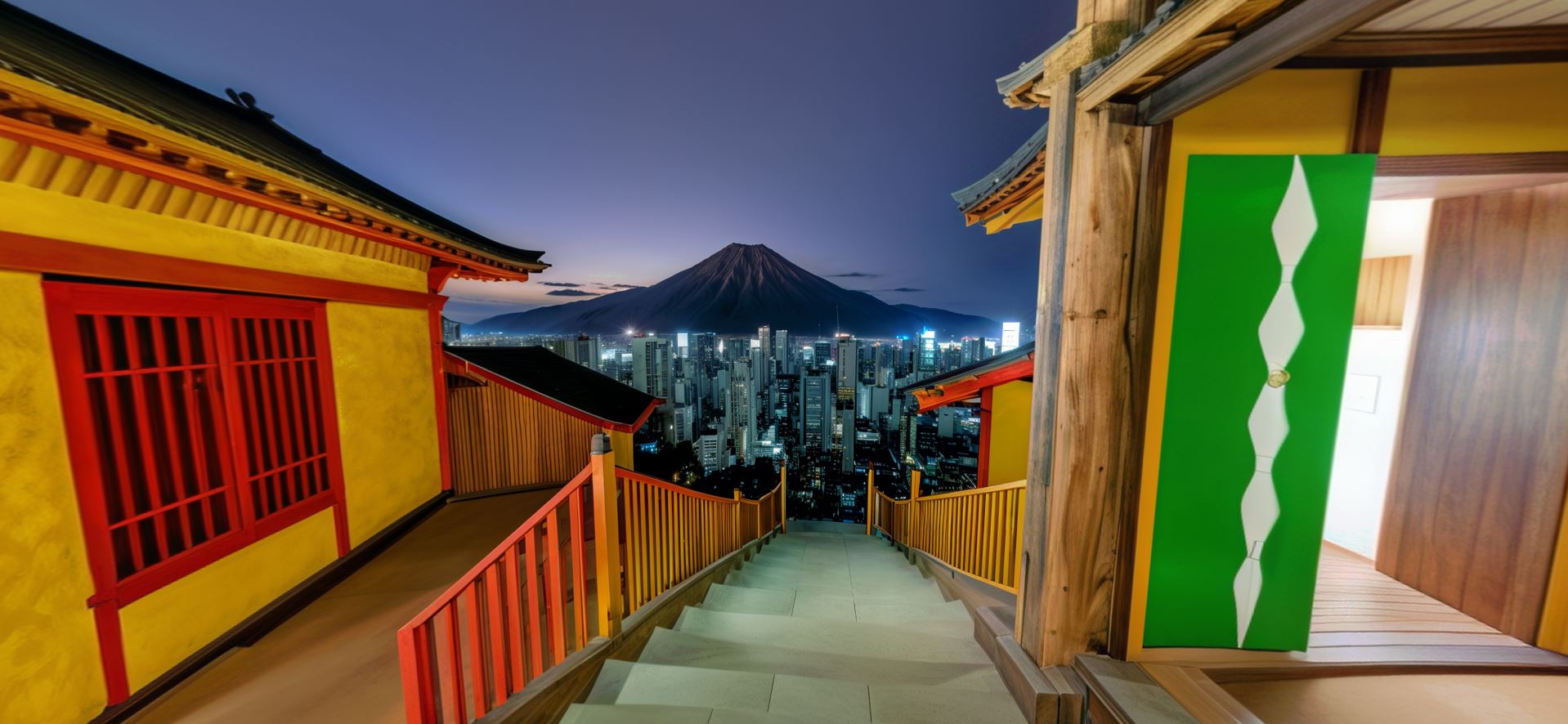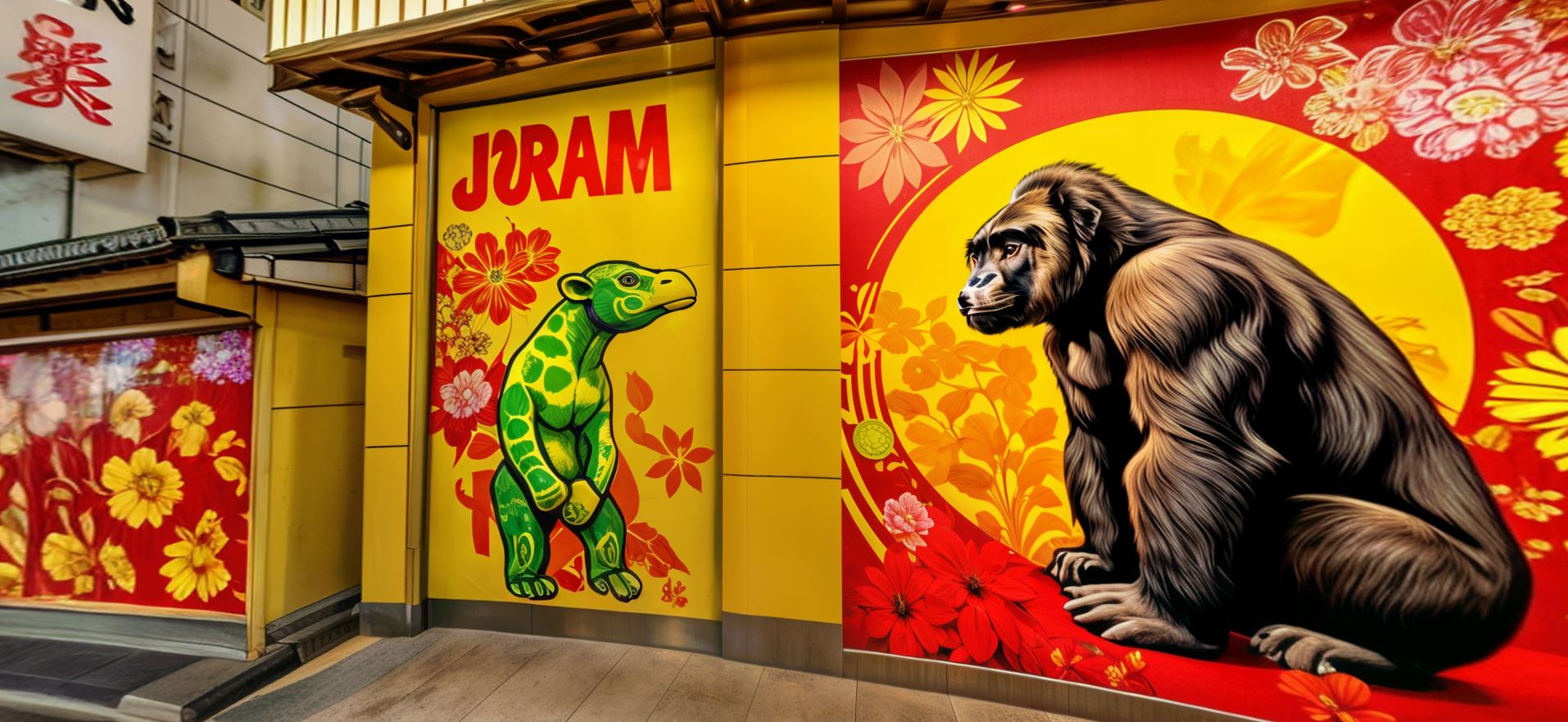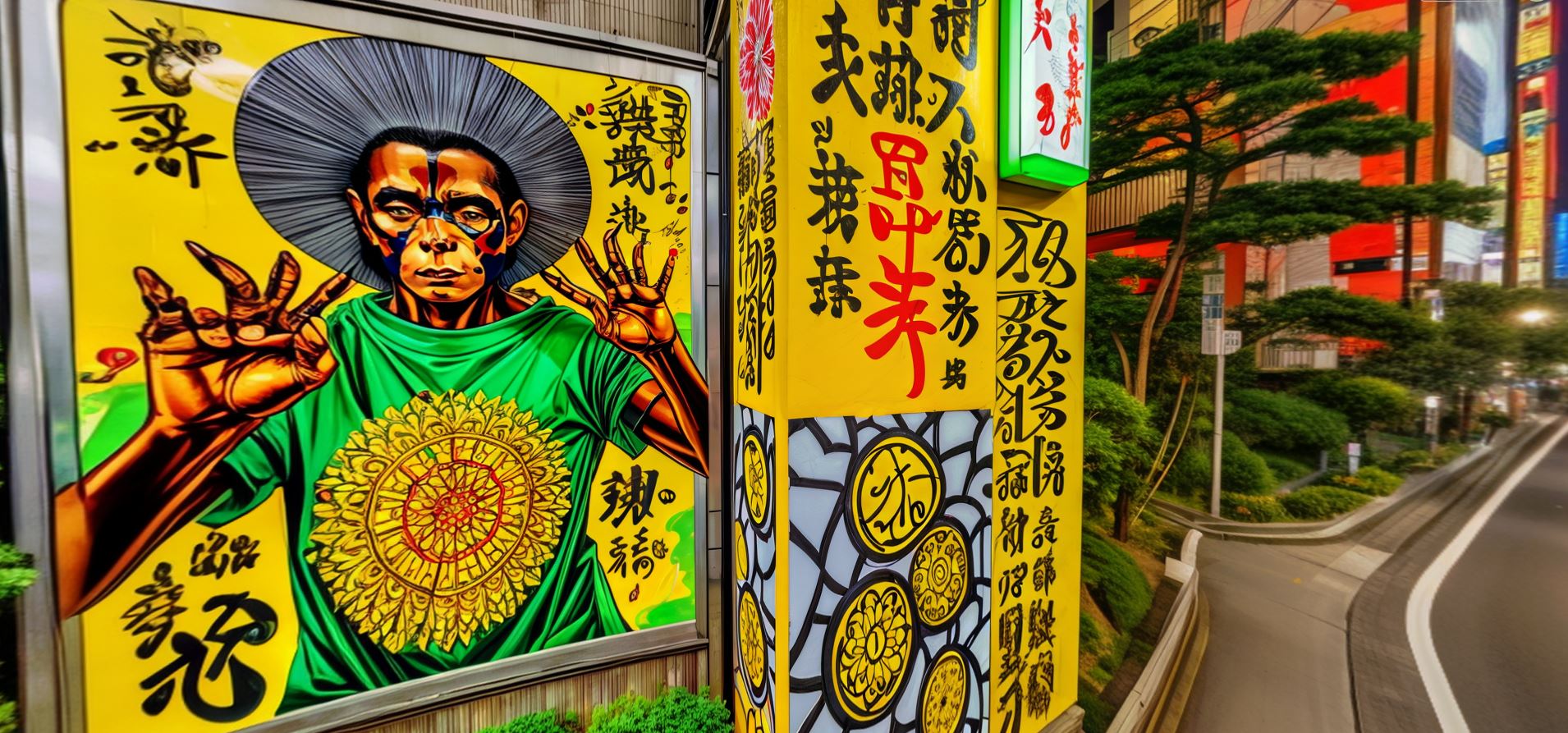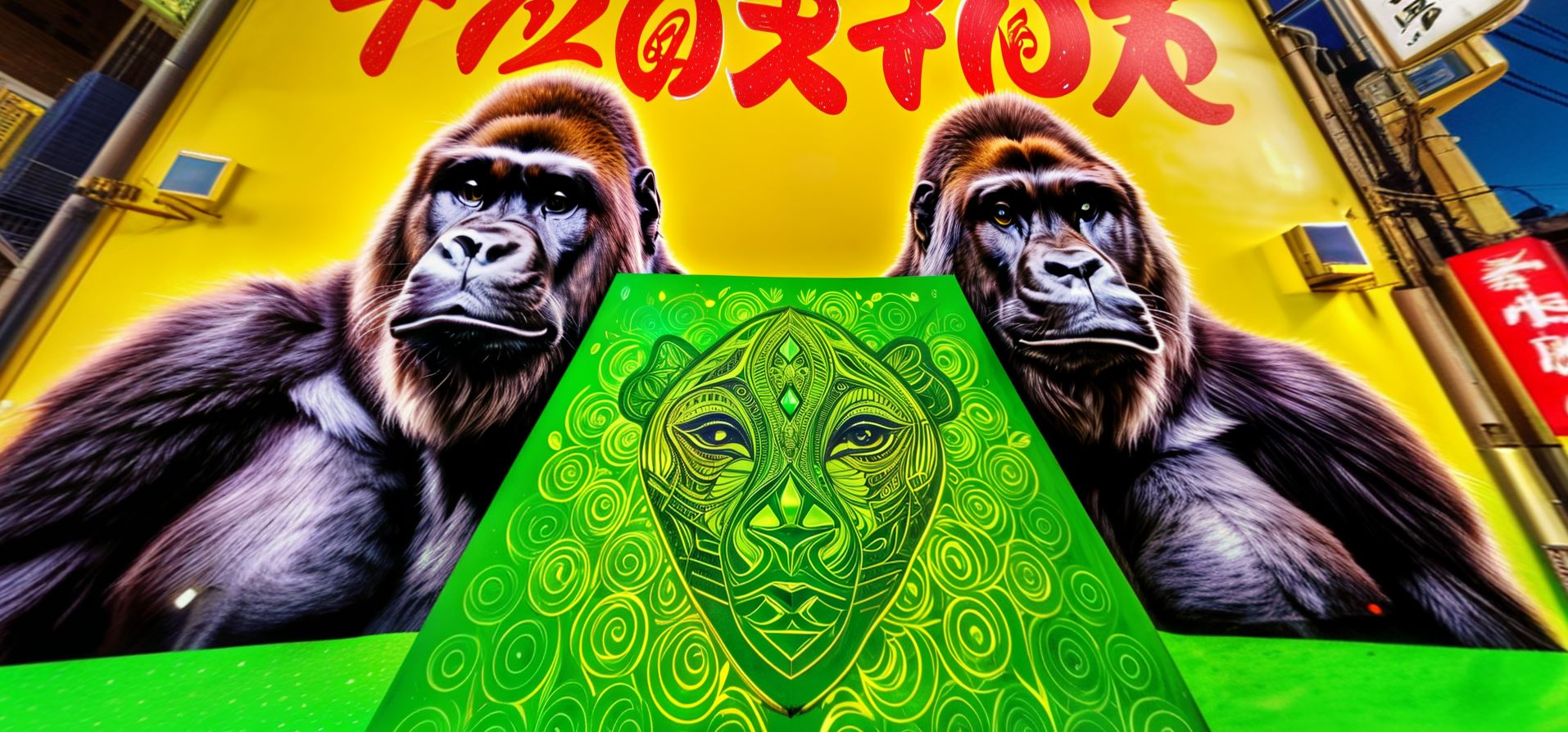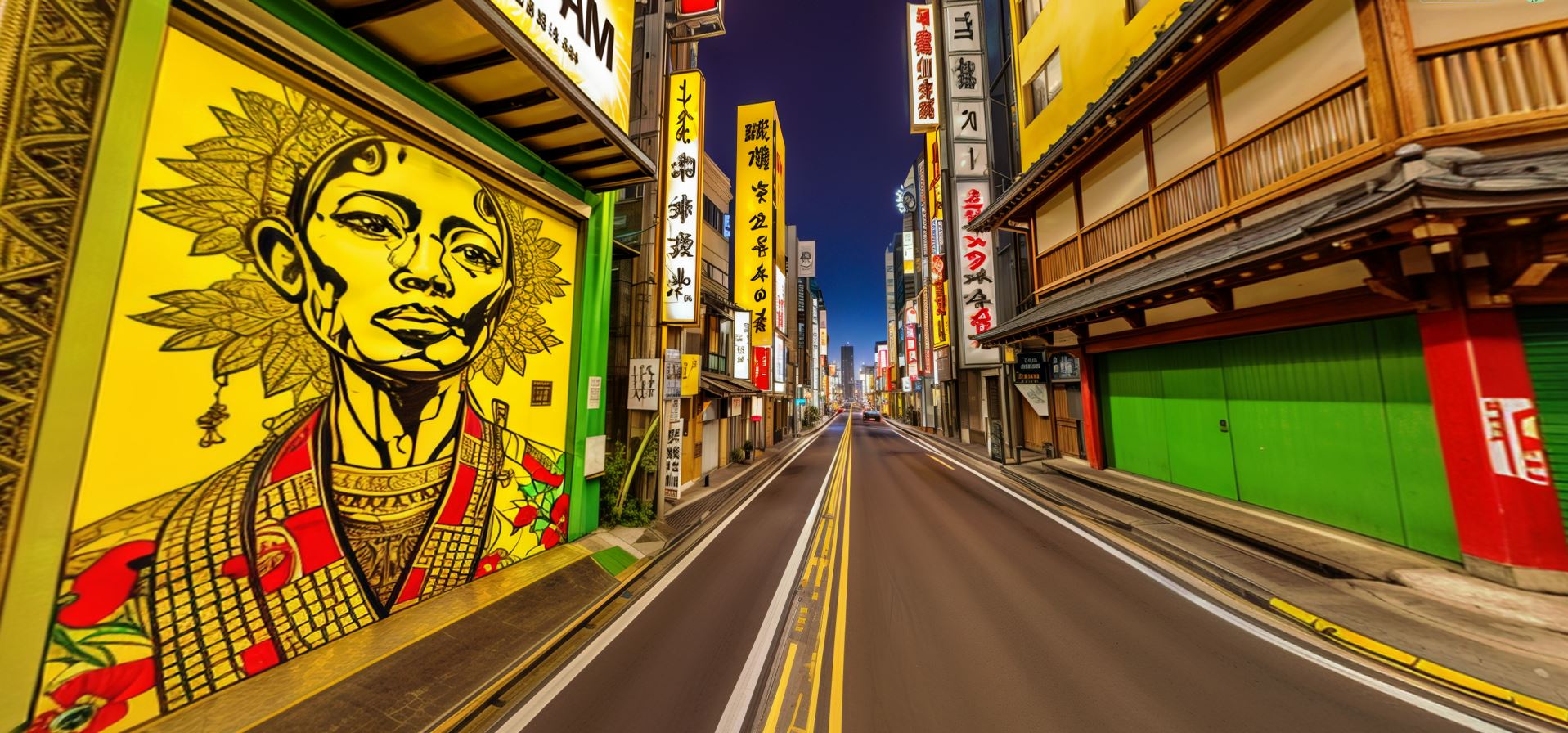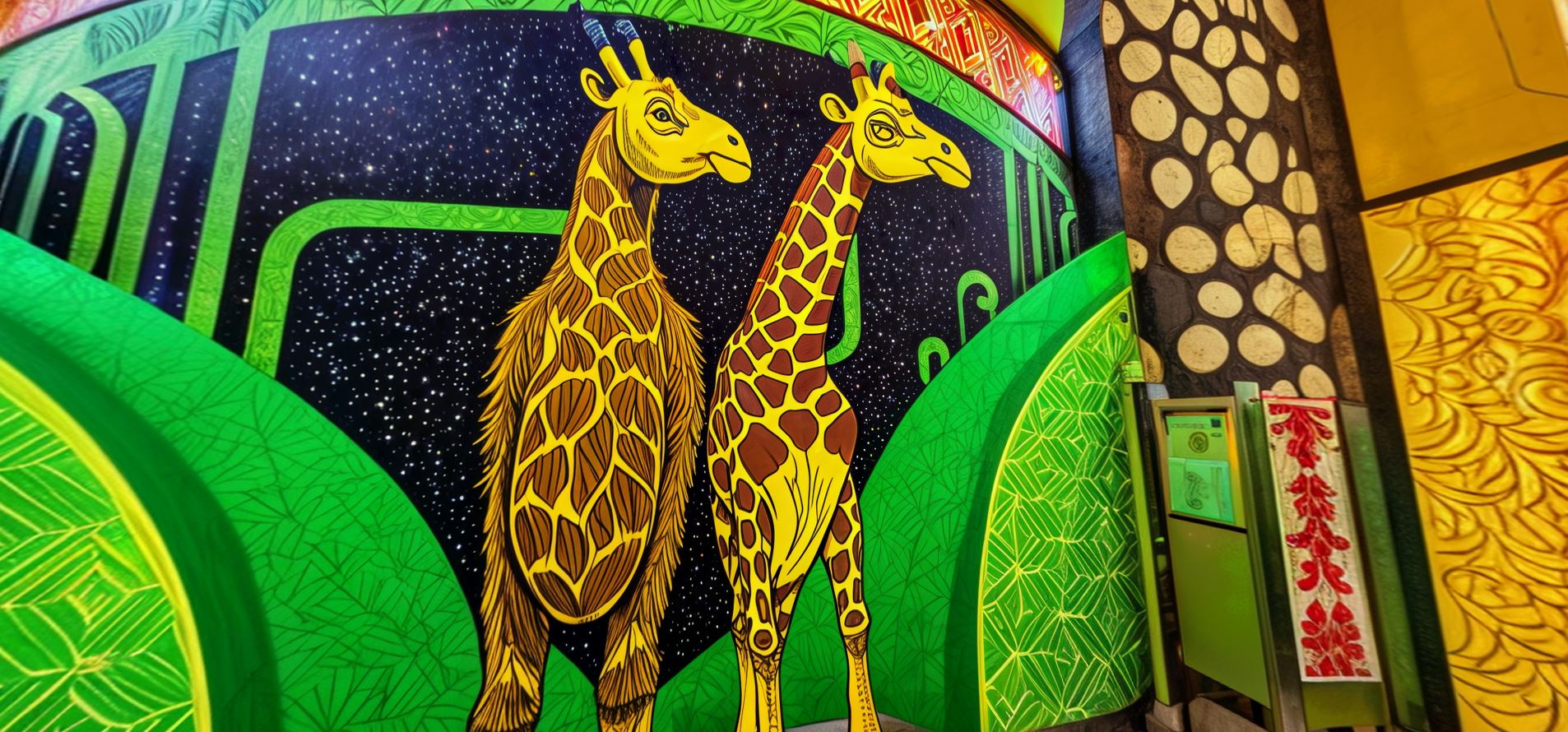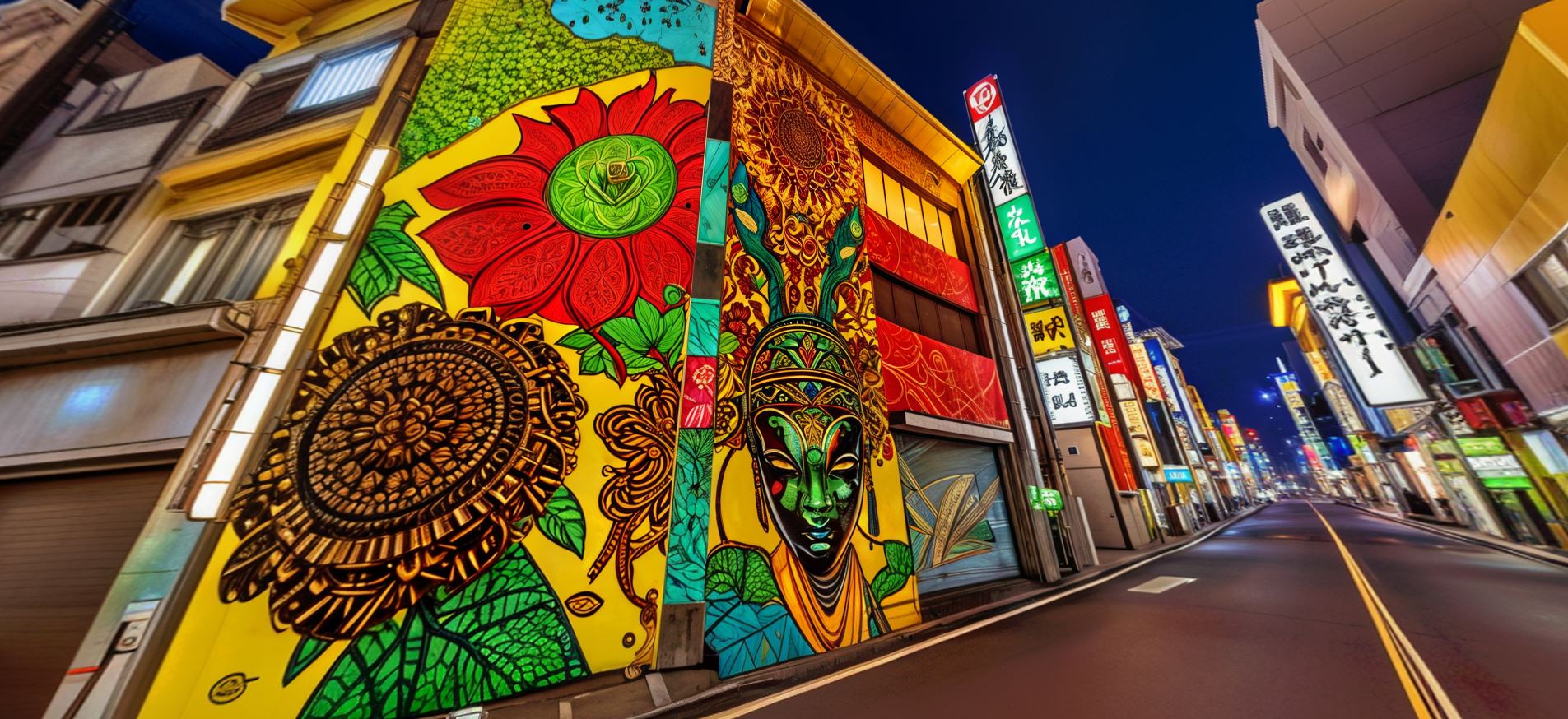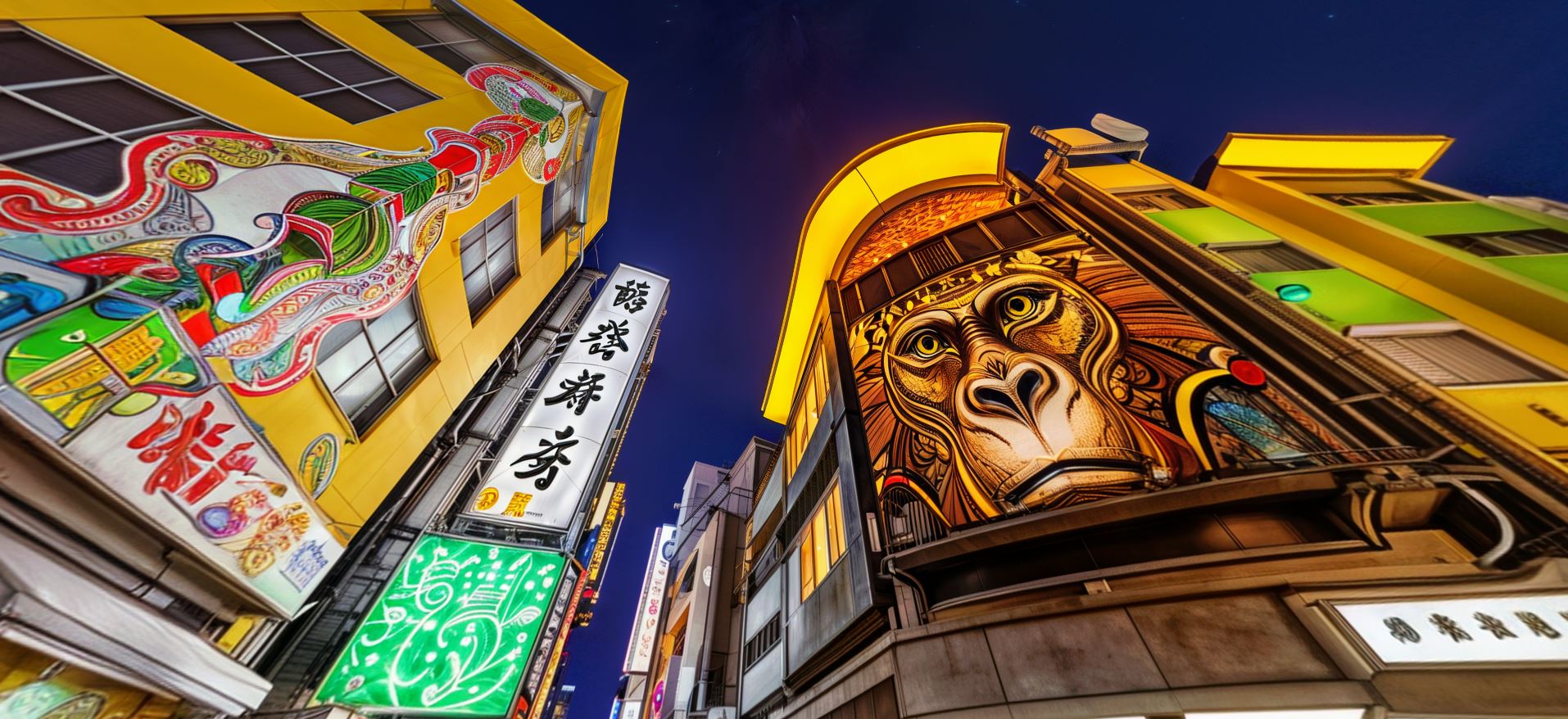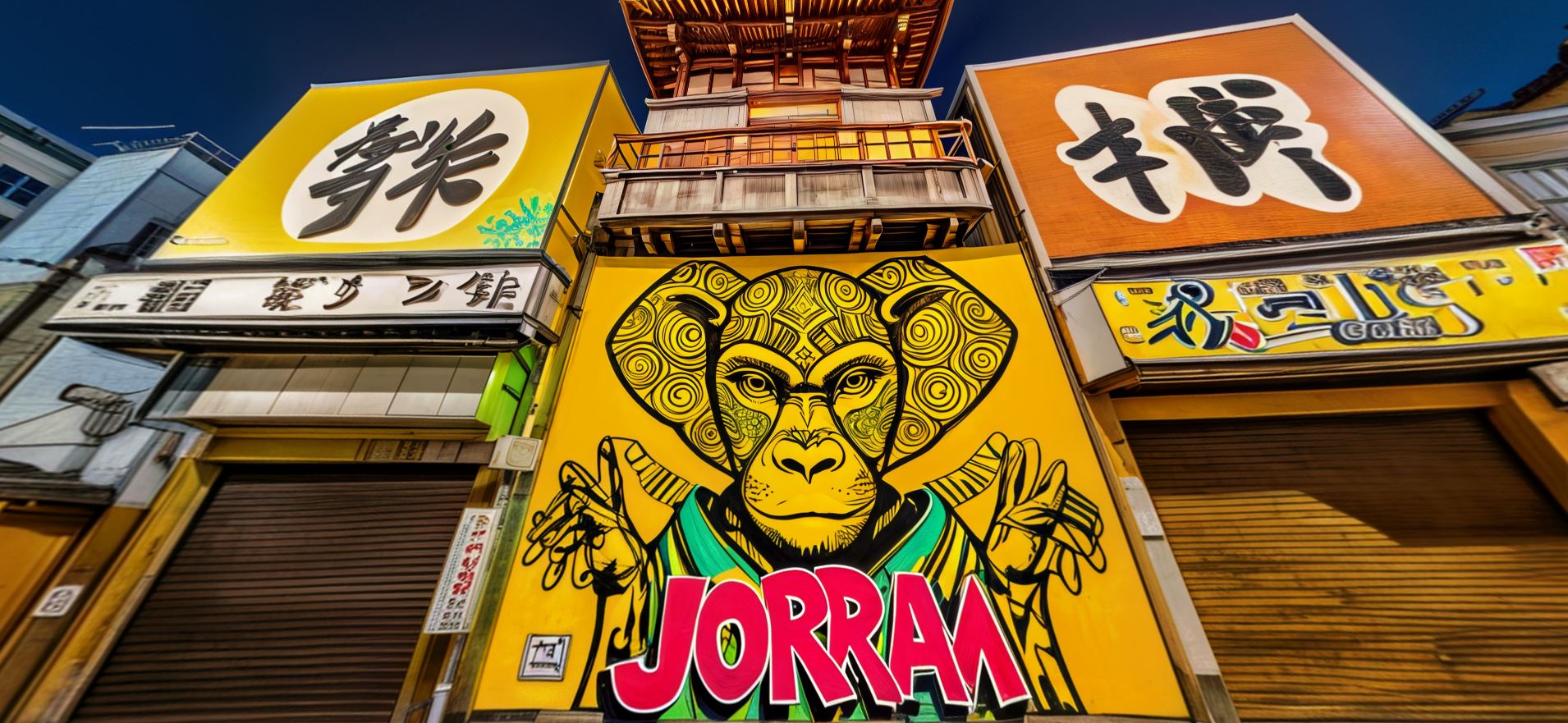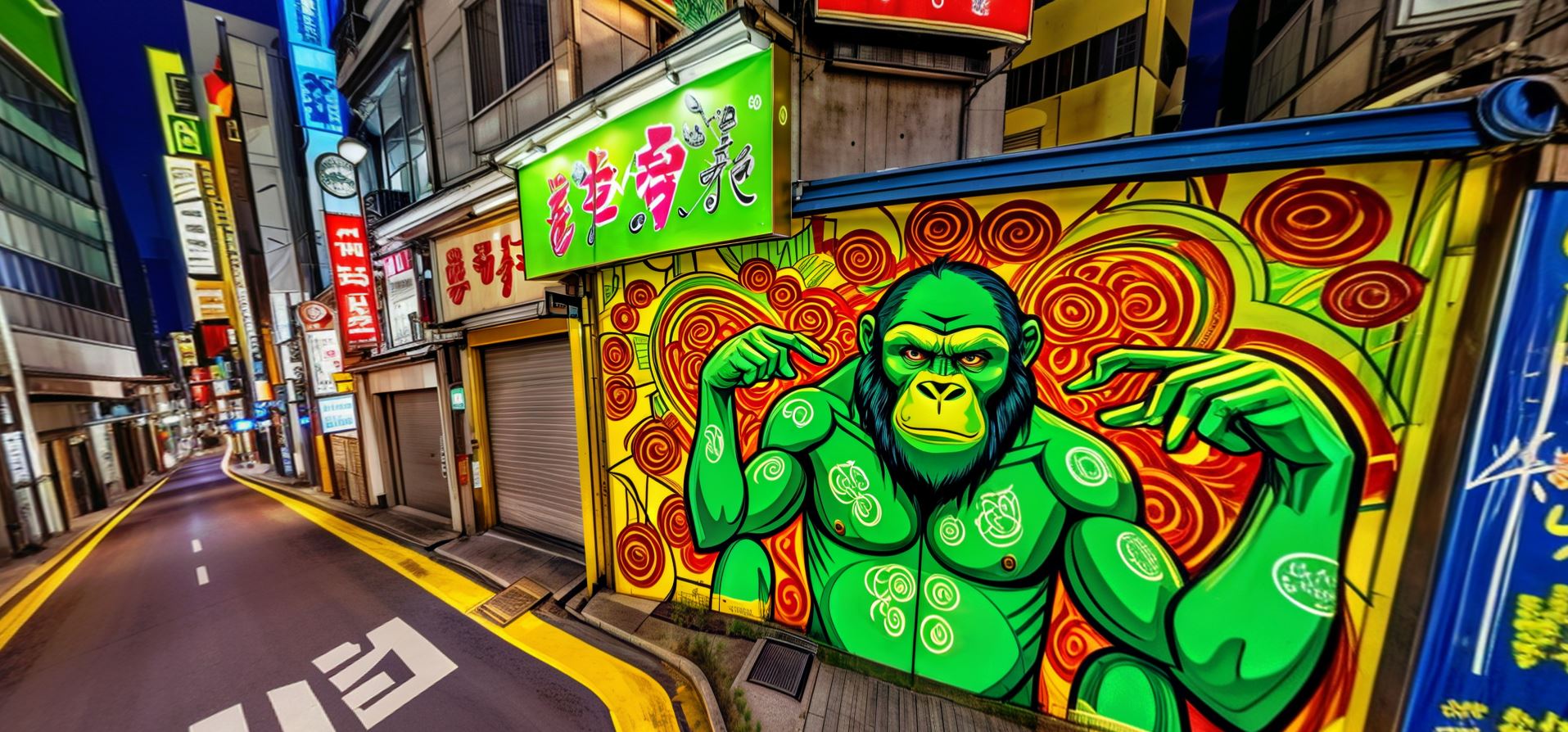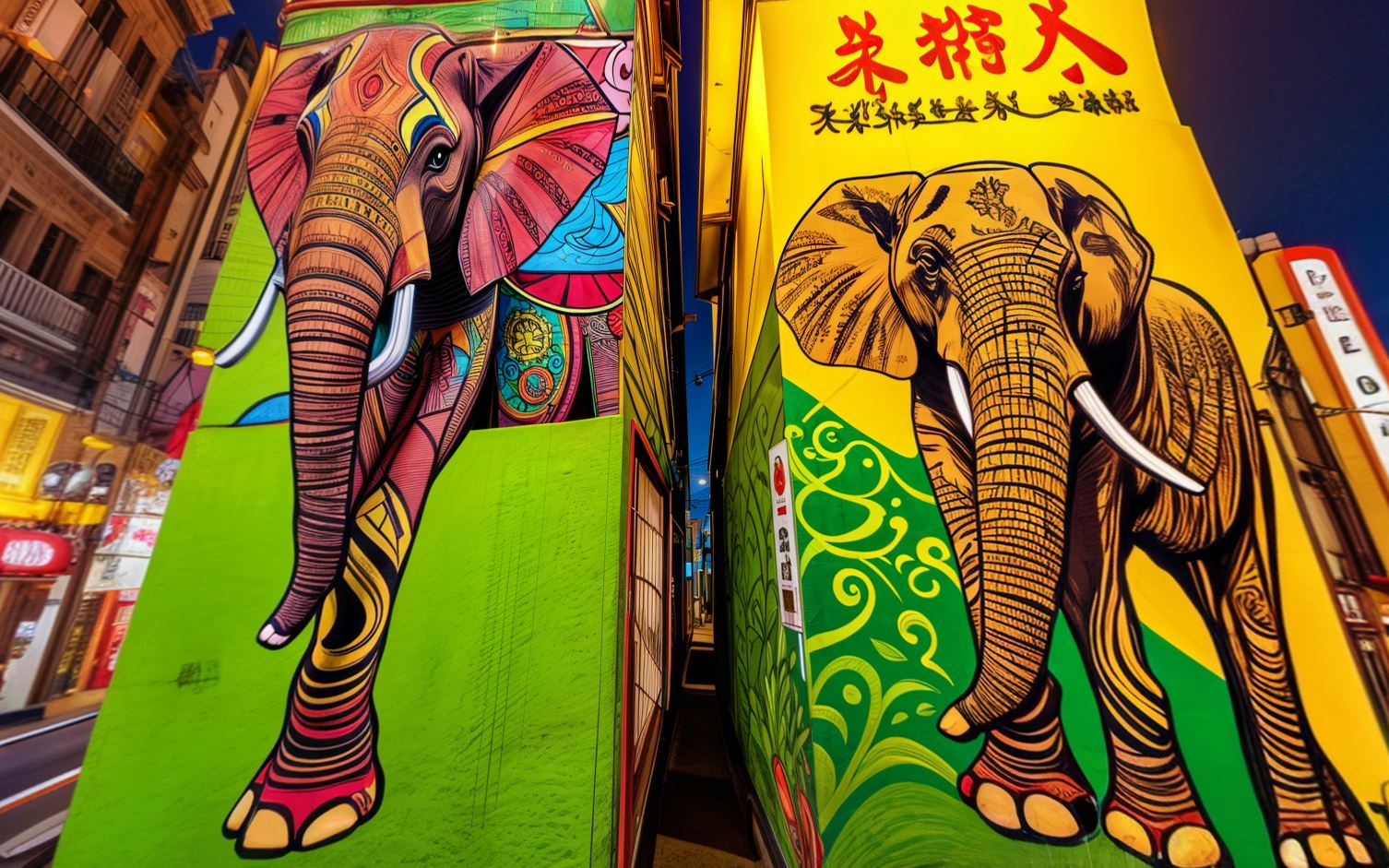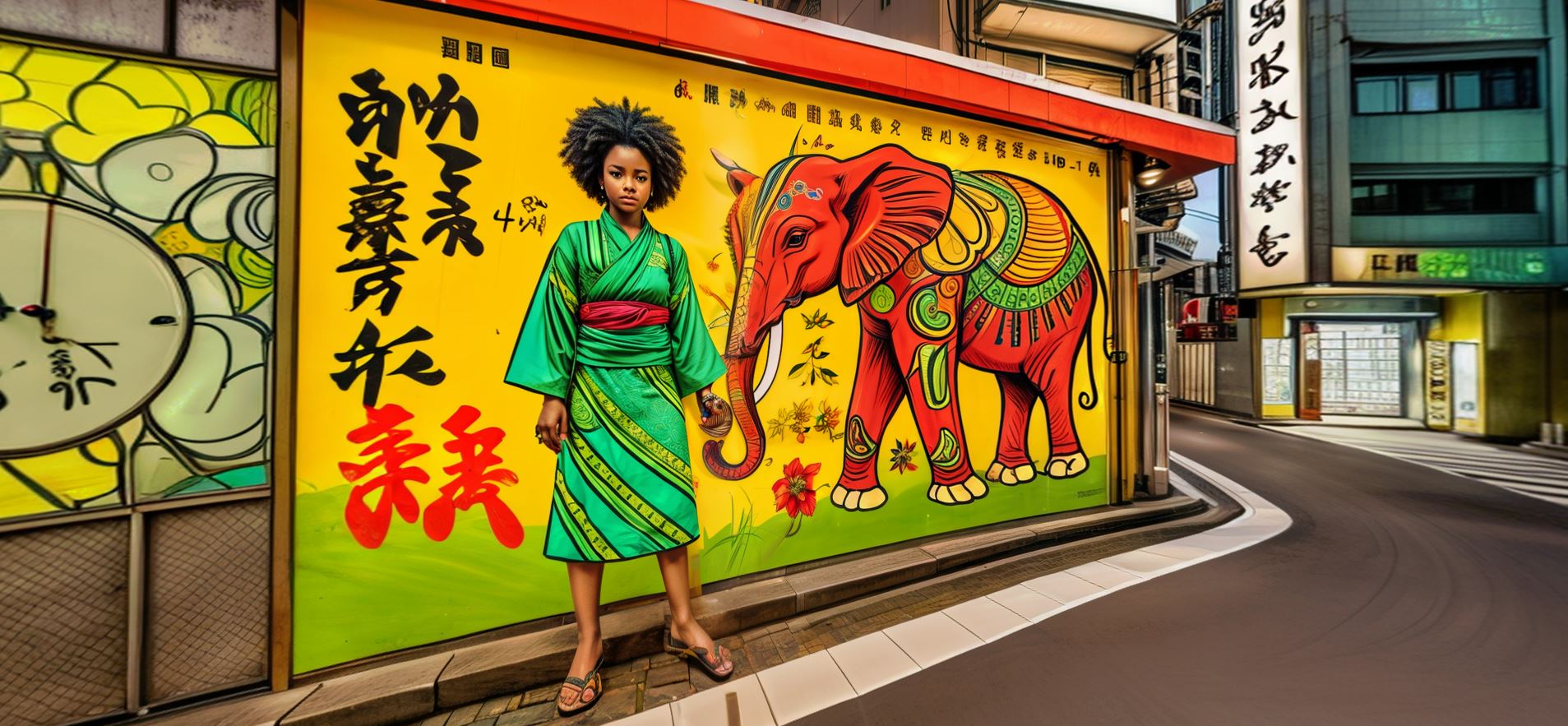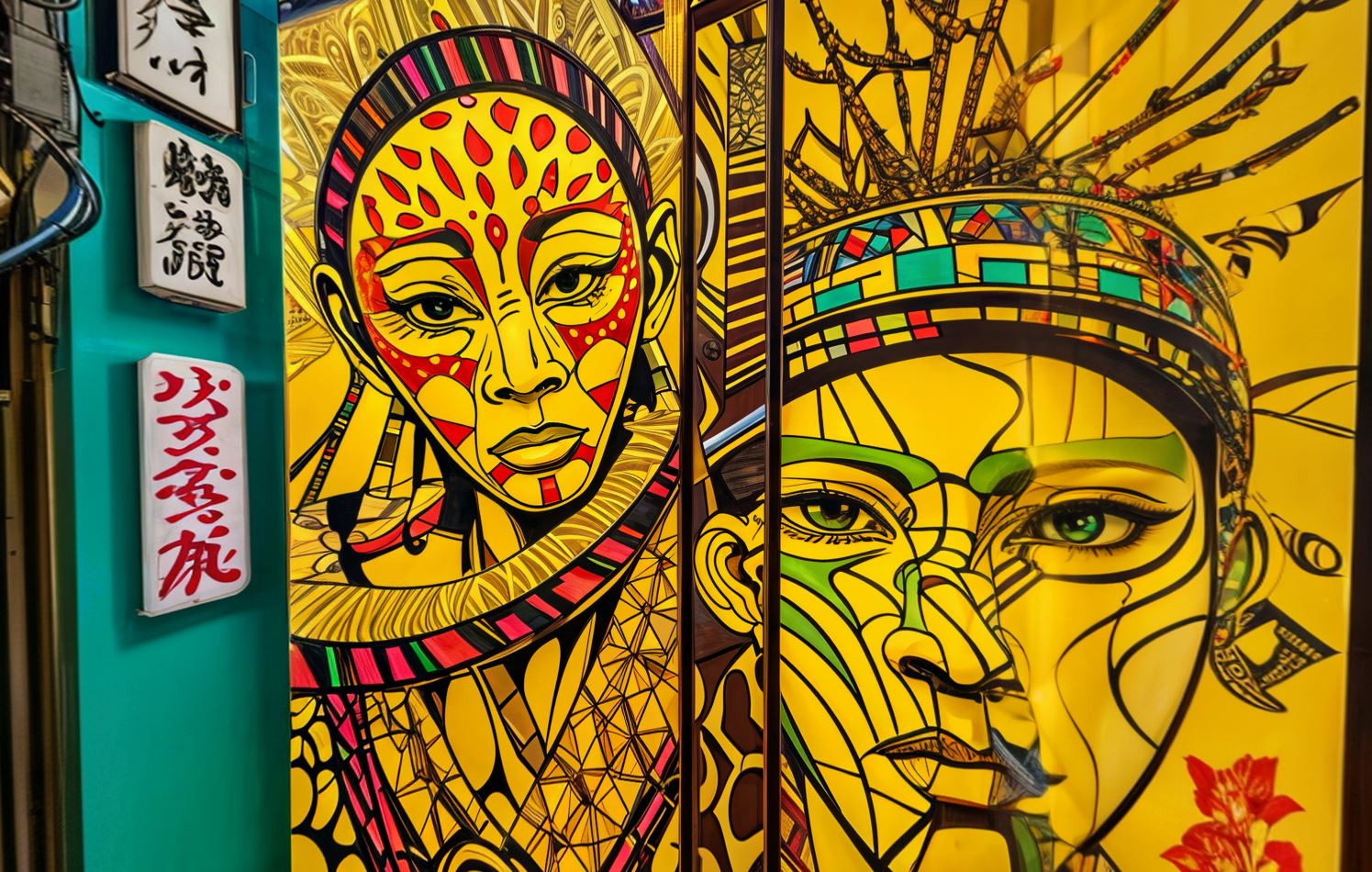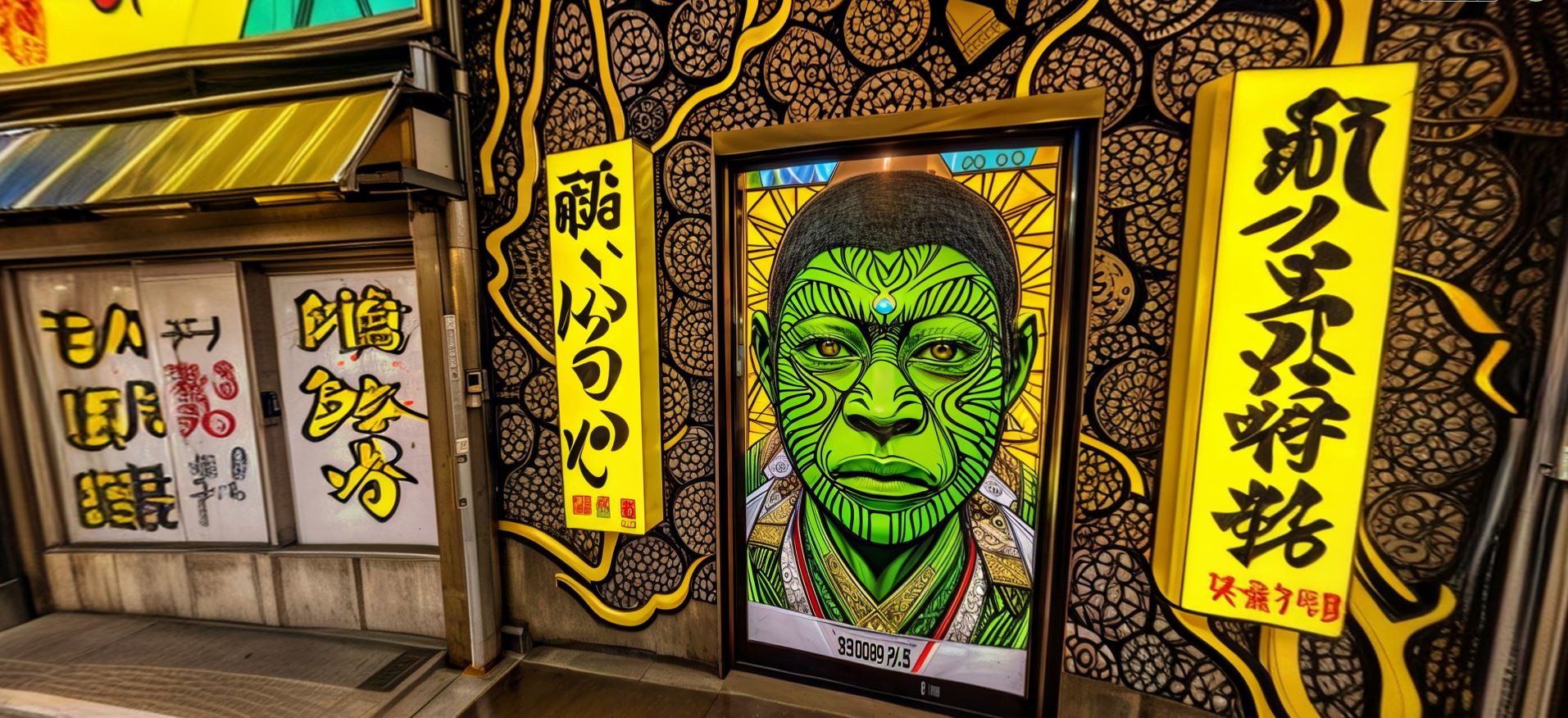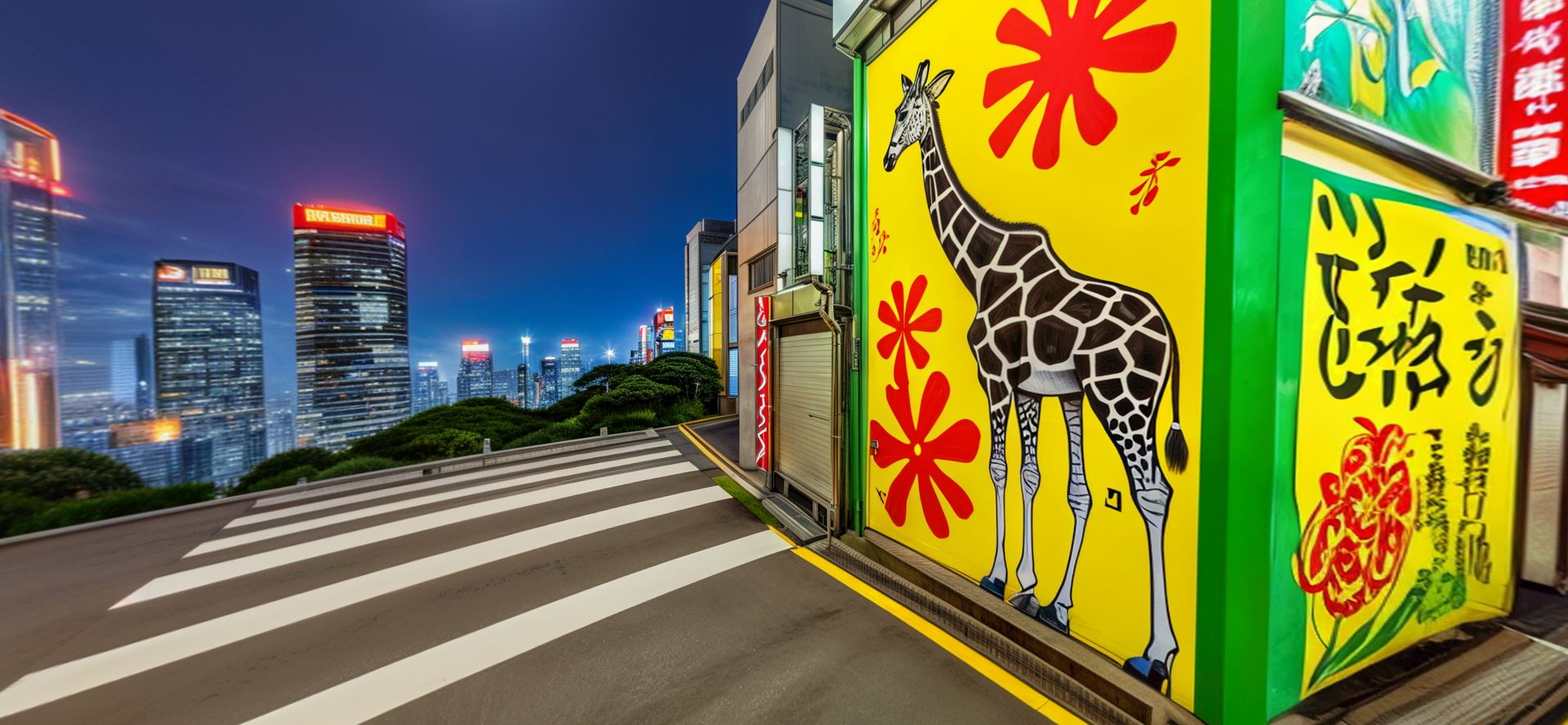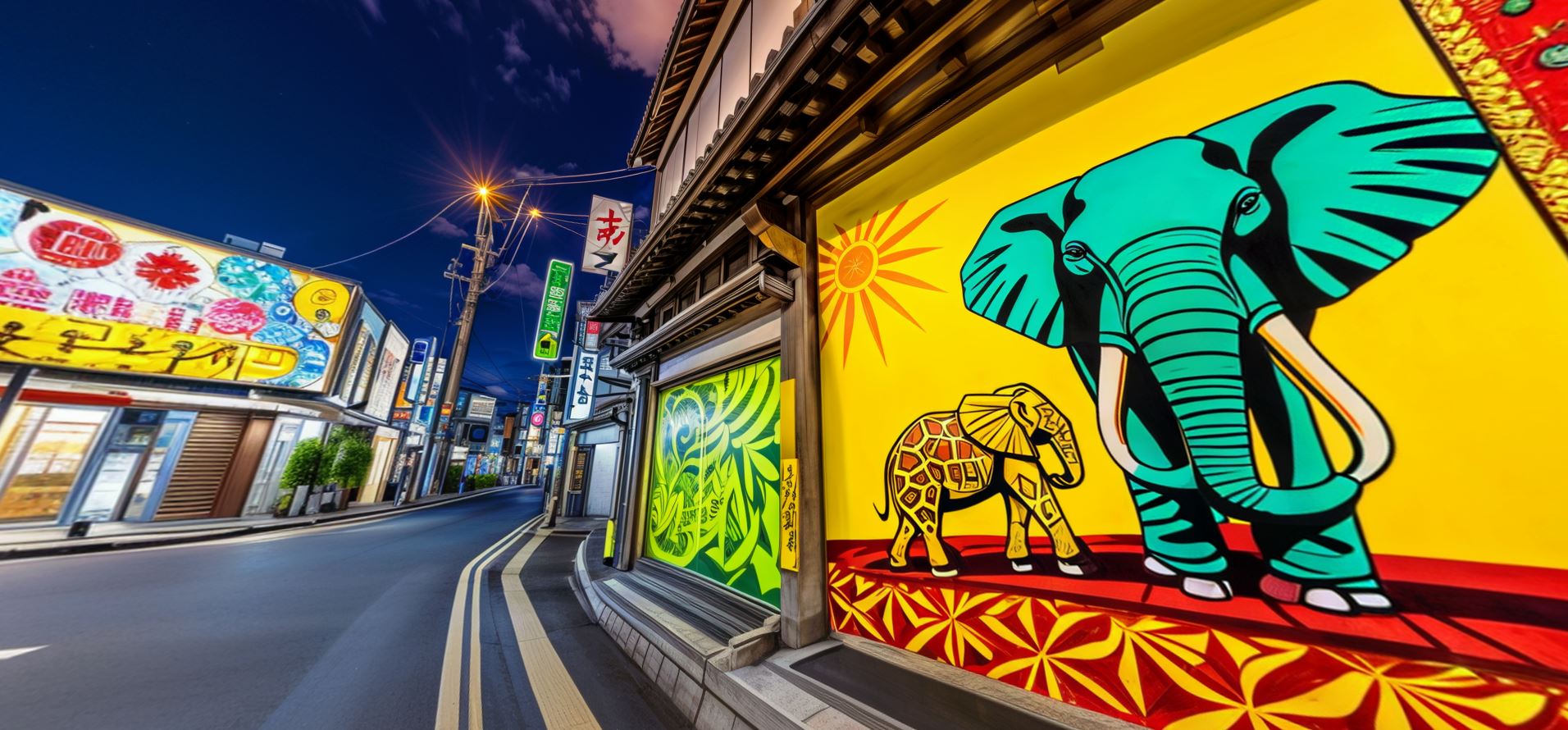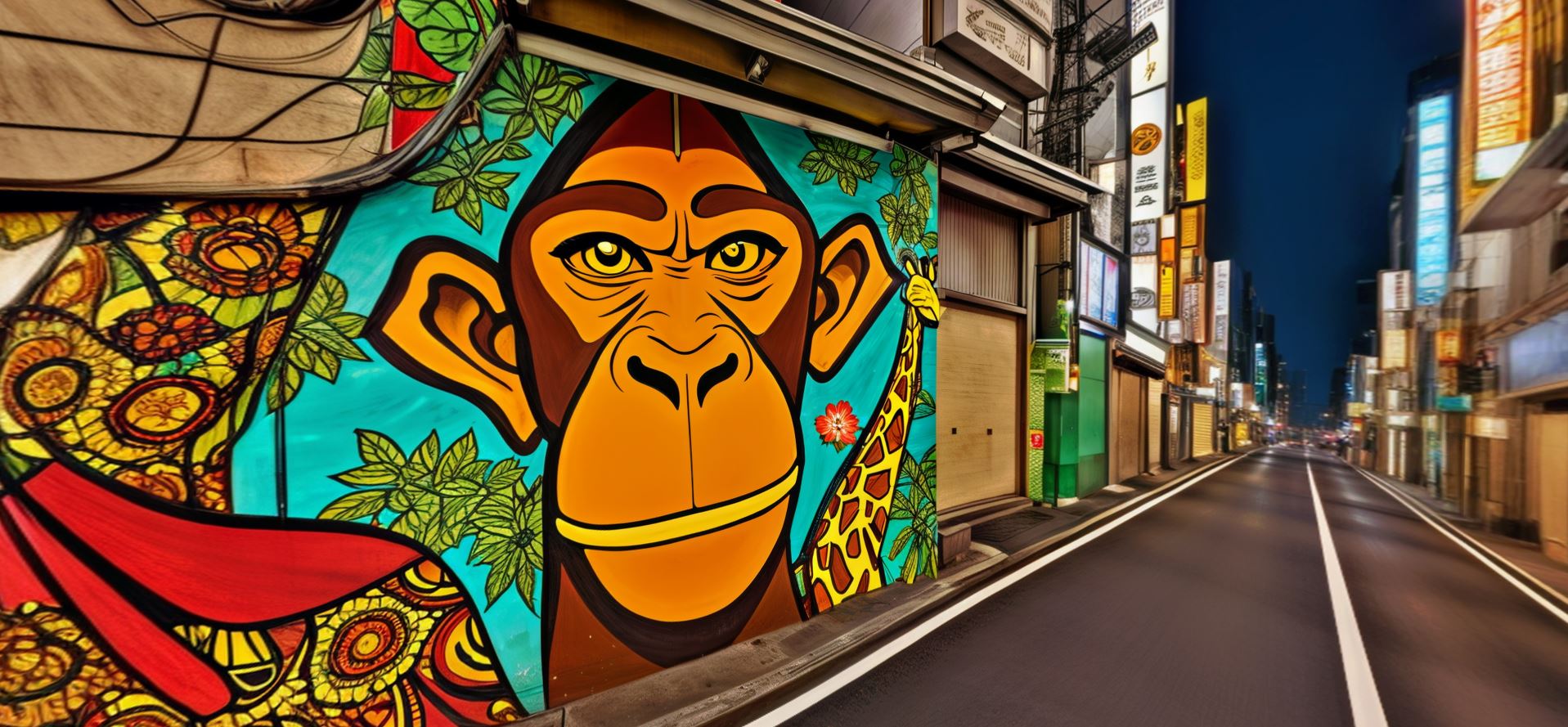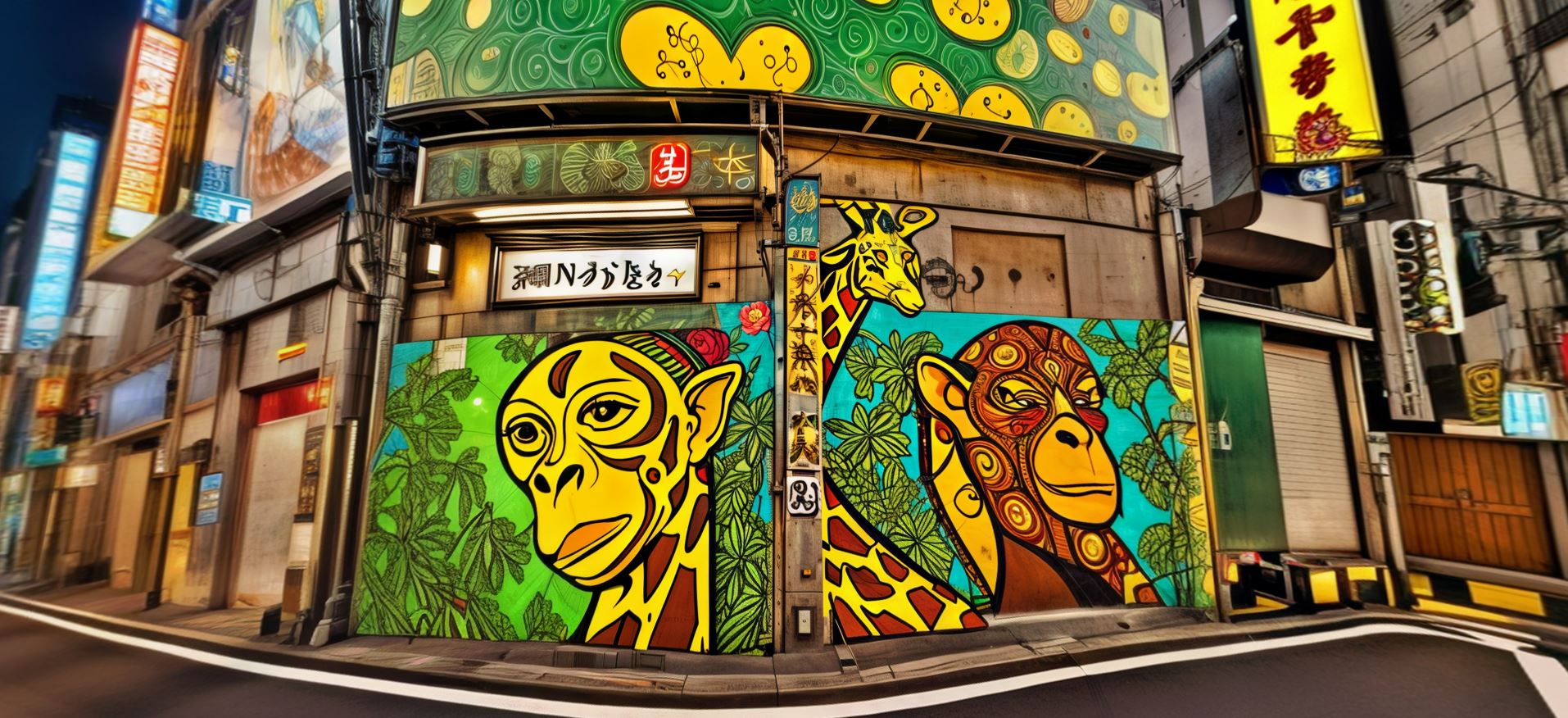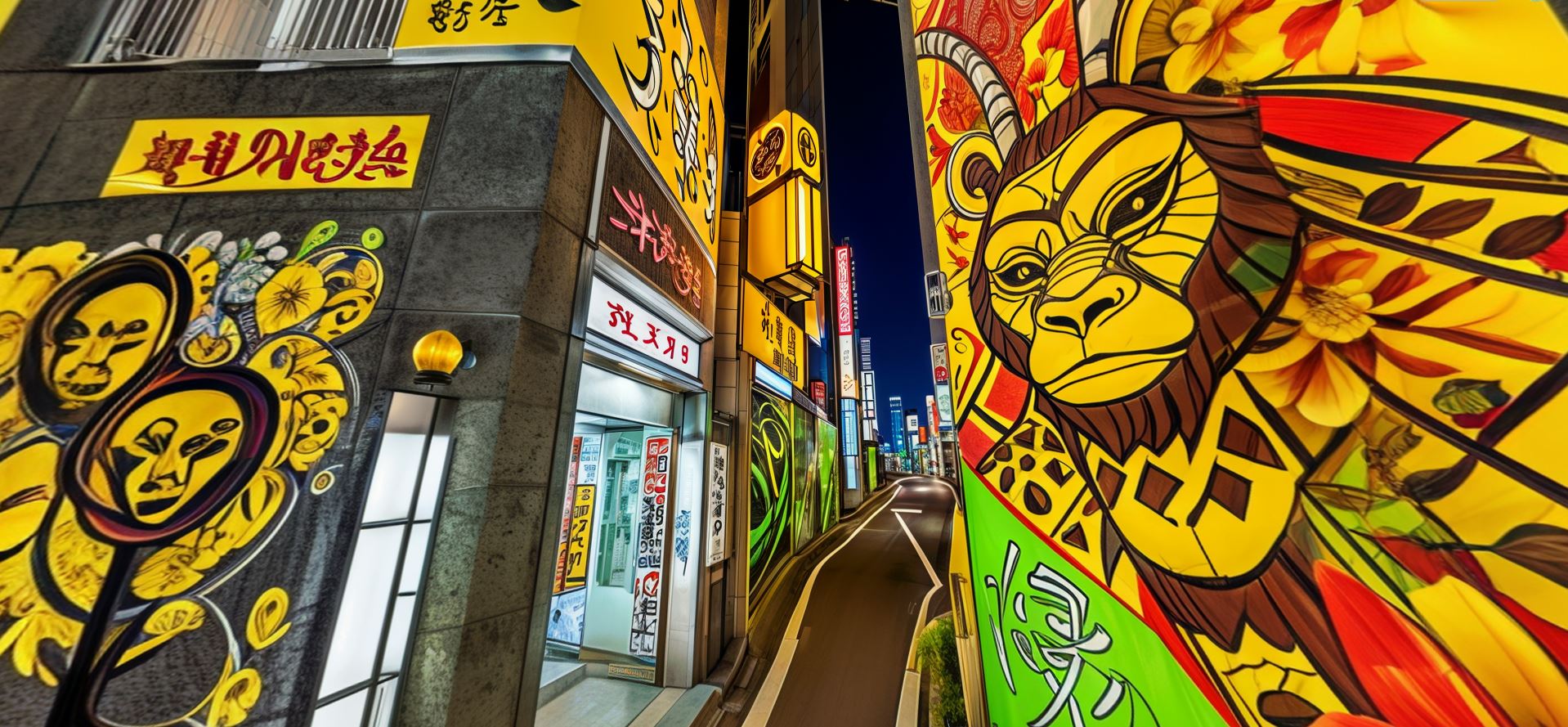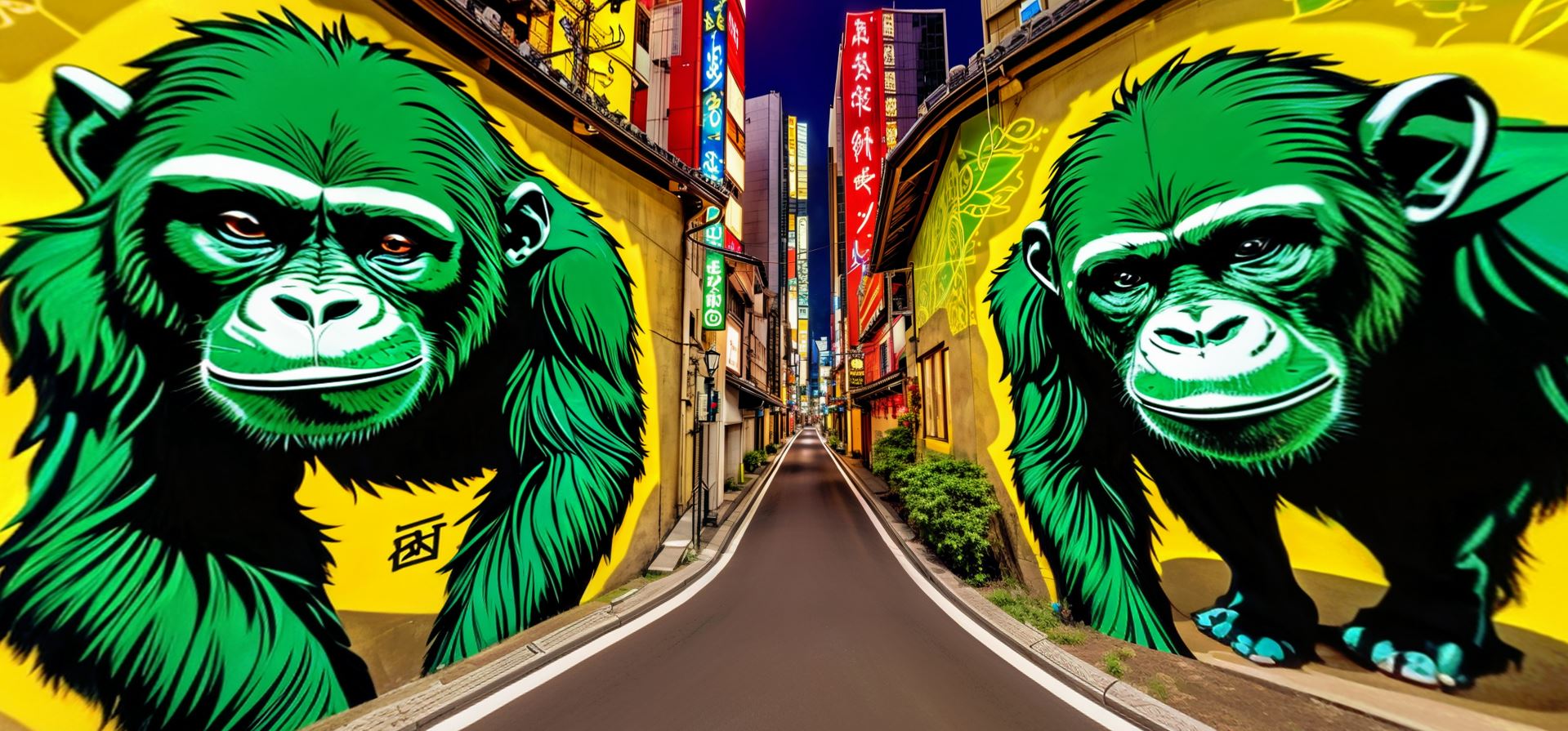Bridging Cultures Through Art: Tanzanian Street Artist Promotes Tourism to Japanese Youth
In the vibrant world of urban art, a Tanzanian street artist is making a significant impact by blending Japanese and Tanzanian cultural elements to create a compelling visual message aimed at promoting tourism to Japanese youth. This innovative approach employs guerrilla marketing techniques, utilising the urban landscape as a dynamic canvas to capture the imagination and interest of potential travellers.
The Intersection of Urban Design and Culture
The interconnection between urban design and culture is a fundamental aspect of urban life. Japanese architecture, with its distinctive fusion of tradition and modernity, provides an optimal setting for the expression of urban cultural phenomena. The decision to utilise the streets as a medium for this artistic endeavour was a strategic one, recognising the power of public spaces to engage and influence a wide audience. Street art, with its accessibility and immediacy, is an effective tool for communicating complex messages in a visually arresting manner.
Contrasting Tourism Trends
A comparison of the tourism trends between Japan and Tanzania reveals a number of fascinating contrasts. Japanese tourists visiting Tanzania are typically motivated by a desire to experience the country’s remarkable natural environments, which include game parks, mountains, and pristine beaches. These natural attractions offer a stark contrast to the urban landscapes of Japan, providing Japanese visitors with a unique and immersive experience in the heart of Africa.
Conversely, Tanzanian tourists who travel to Japan often prioritize exploring urban spaces. The urban centres of Tokyo, Osaka, and Kyoto, characterised by their skyscrapers, neon lights, and rich cultural heritage, present a captivating allure for Tanzanian visitors. This preference for urban tourism underscores the importance of urban design and culture in shaping travel experiences. It also highlights the potential for street art to bridge cultural gaps and foster mutual understanding.
The Cross-Pollination of Architectural and Urban Planning Between Japan and the West
It is of the utmost importance to acknowledge that European and American architects and planners have been engaged in projects in Japan for centuries, significantly influencing stylistic debates in both regions. Concurrently, Japanese professionals have pursued studies in the West, acquiring knowledge about methods and technology, interpreting and transforming their findings, and incorporating them into their home context. Nations with long-standing histories and independent traditions, such as Japan, experienced periods of significant upheaval as they modernised and westernised.
Only recently has there emerged a comprehensive investigation into the architectural and urban history of Japan that examines the acceptance, transformation, and rejection of Western models. Some specific features of Japanese architectural and urban culture, such as the imperial Japanese villas, have long been part of the broader field of international architectural and urban history. Nevertheless, for several decades, Western observers have been aware of these elements without fully grasping their cultural and historical contexts.
Historical Context and Early Influences
The exchange of architectural ideas between Japan and the West can be traced back to the 16th century, when European missionaries and traders first arrived in Japan. These early interactions established the foundation for a more profound exchange of architectural knowledge. The Meiji Restoration, which occurred in the late 19th century, marked a pivotal moment in Japanese history, as the country actively sought to modernize by adopting Western technologies and architectural styles. This period saw the construction of Western-style buildings, such as the Rokumeikan in Tokyo, which became emblematic of Japan’s modernization efforts.
The Role of Japanese Architects in the West
Japanese architects and planners have also made a notable impact on Western architecture. Notable figures such as Tadao Ando and Kenzo Tange have left a profound and enduring impact on the global architectural landscape. Their work frequently incorporates traditional Japanese elements, such as the use of natural materials and an emphasis on harmony with the surrounding environment, while also embracing modernist principles. This fusion of East and West has resulted in the creation of innovative designs that challenge conventional architectural norms.
The Transformation of Western Models in Japan
The process of adopting Western architectural models in Japan has not been one of mere imitation. Instead, Japanese architects have interpreted and transformed these models in a manner that is consistent with their unique cultural and environmental contexts. For instance, the concept of the machiya, or traditional wooden townhouses, has been reimagined in contemporary Japanese architecture. Modern machiya frequently integrate Western elements, such as expansive windows and open floor plans, while maintaining traditional characteristics, including tatami mats and sliding doors.
The Rejection of Western Models
While Western architectural models have had a significant impact on Japanese architecture, there has also been a conscious effort to reject certain aspects of Westernisation. This rejection is frequently motivated by a desire to preserve Japan’s distinctive cultural identity. For example, the Metabolist movement of the 1960s and 1970s sought to create a distinctly Japanese form of modern architecture that emphasised organic growth and adaptability. This movement was a reaction against the rigid, standardized designs that were characteristic of much of Western modernism.
The Influence of Japanese Architecture on the West
The impact of Japanese architecture on the West is evident in various architectural movements and styles. The minimalist aesthetic, which places emphasis on simplicity and functionality, has its roots in traditional Japanese design principles. This aesthetic has been embraced by Western architects and designers, leading to the development of minimalist architecture and interior design. Furthermore, the concept of “wabi-sabi,” which values imperfection and transience, has inspired Western architects to incorporate natural materials and organic forms into their designs.
The Role of Urban Planning
Additionally, urban planning in Japan has been influenced by both Western influences and traditional Japanese principles. The rapid urbanisation of Japan in the post-World War II era led to the adoption of Western planning models, such as zoning regulations and grid-based street layouts. Nevertheless, Japanese urban planners have also integrated traditional elements, such as the utilisation of green spaces and the conservation of historical districts. This fusion of traditional and modern elements has given rise to distinctive urban landscapes that encapsulate Japan’s multifaceted history and cultural heritage.
The Art of Guerrilla Marketing
Guerrilla marketing, defined by its unconventional and often surprising tactics, is particularly well-suited to the world of street art. The Tanzanian street artist’s objective is to create visually striking and thought-provoking pieces in public spaces with the intention of capturing the attention of Japanese youth and inspiring them to consider Tanzania as a travel destination. This approach exploits the persuasive power of visual narrative, employing art to convey messages that resonate on an emotional level.
The artist’s work represents a synthesis of Japanese and Tanzanian cultural elements, seamlessly blending motifs and symbols from both traditions. This fusion results in the creation of a distinctive visual language that resonates with the shared values and experiences of both cultures. For instance, traditional Tanzanian patterns and colours might be integrated with Japanese calligraphy or architectural elements, thereby creating a harmonious and visually engaging composition.
Cultural Exchange Through Art
The medium of art has long been a powerful conduit for cultural exchange. The work of this Tanzanian street artist exemplifies this potential. The artist’s incorporation of elements of both Japanese and Tanzanian cultures not only serves to promote tourism but also fosters a deeper understanding and appreciation of cultural diversity. This artistic dialogue encourages viewers to transcend the limitations of stereotypes and preconceived notions, thereby opening their minds to new perspectives and experiences.
The impact of this cultural exchange extends beyond the sphere of tourism, contributing to a broader discourse on the role of art in society. In particular, street art challenges traditional notions of art and its place in the public sphere. By introducing art into the public domain, the artist democratises the experience of art, rendering it accessible to all and encouraging public engagement with cultural and social issues.
The Role of Technology in Modern Street Art
In the digital age, technology plays a pivotal role in amplifying the reach and impact of street art. Social media platforms, in particular, provide a powerful tool for artists to disseminate their work to a global audience. The Tanzanian street artist employs these platforms to document and disseminate their work, thereby creating a virtual gallery that transcends geographical boundaries.
By disseminating images and videos of their street art online, the artist can engage with a diverse and international audience, sparking conversations and inspiring others to explore the cultural connections between Japan and Tanzania. Furthermore, the artist’s digital presence enables the construction of a community of followers and supporters, thereby fostering a sense of connection and shared purpose.
The Future of Street Art and Tourism
As the world becomes increasingly interconnected, the potential for street art to influence tourism and cultural exchange continues to grow. The work of the Tanzanian street artist provides a compelling illustration of the potential for art to serve as a conduit for cultural exchange and mutual understanding. By appropriating the streets as a canvas and employing the techniques of guerrilla marketing, the artist creates a compelling visual narrative that resonates with Japanese youth and encourages them to explore the rich cultural heritage of Tanzania.
In the future, the continued evolution of street art and its integration with digital technologies will likely result in the opening of new avenues for artistic expression and cultural exchange. As artists continue to innovate and challenge the boundaries of their craft, they will play a pivotal role in shaping the future of art.
To be continued…
Tanzania Media
- Kanyala Ferry Launch: TEMESA’s New Service for 15,000 Sengerema Residents (Mwanza) - 18 August 2025
- Russia-Tanzania Naval Cooperation: How the Smolny Training Ship Boosts Dar es Salaam’s Maritime Security - 18 August 2025
- Tanzania’s ICGLR Commitment: Stabilising the DRC & Great Lakes Region - 18 August 2025

